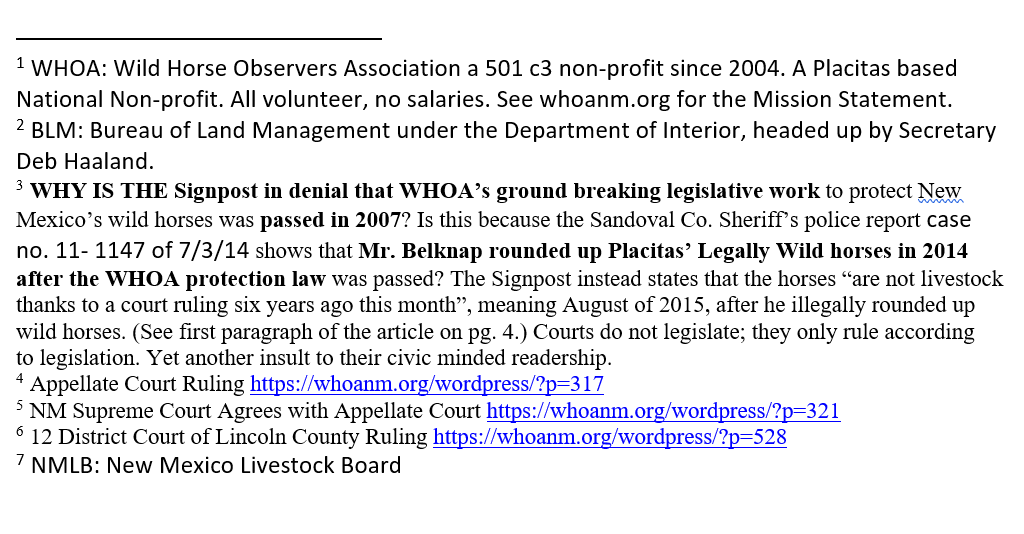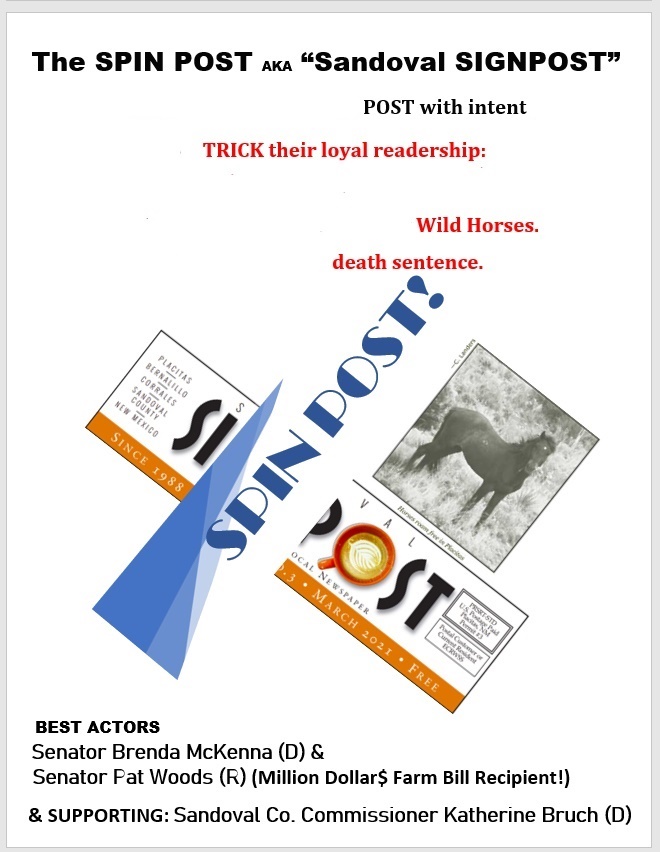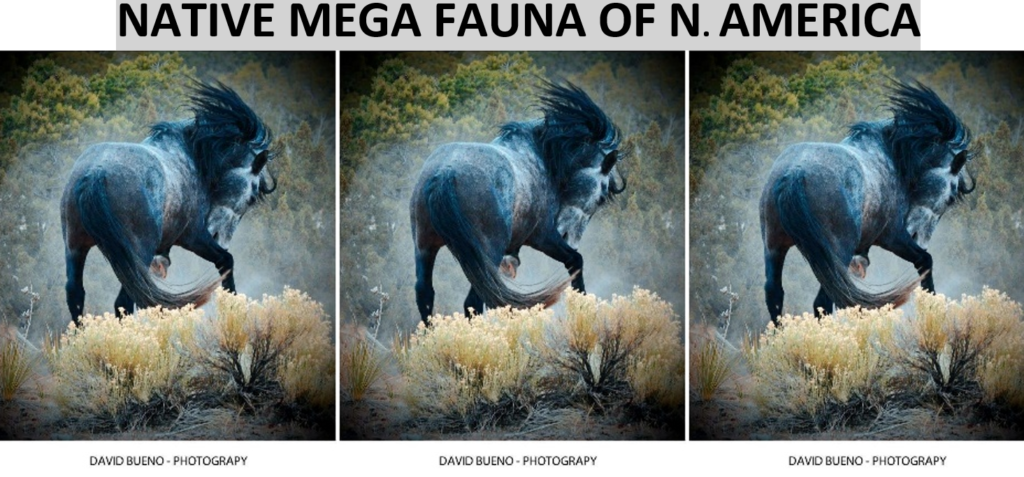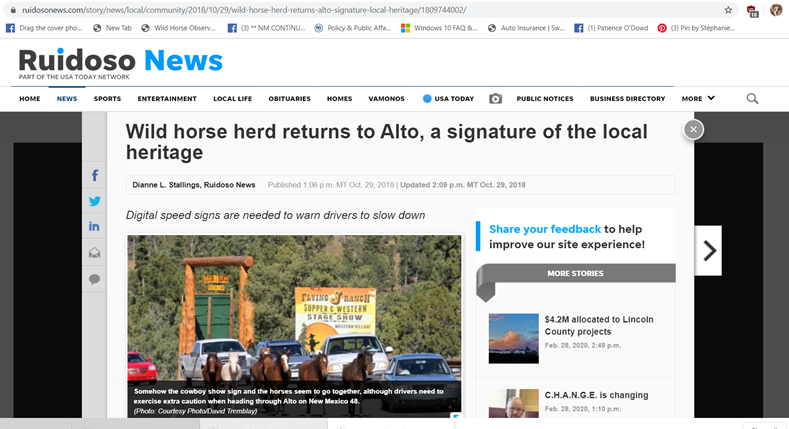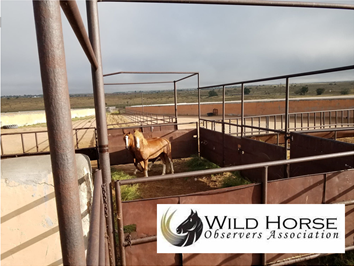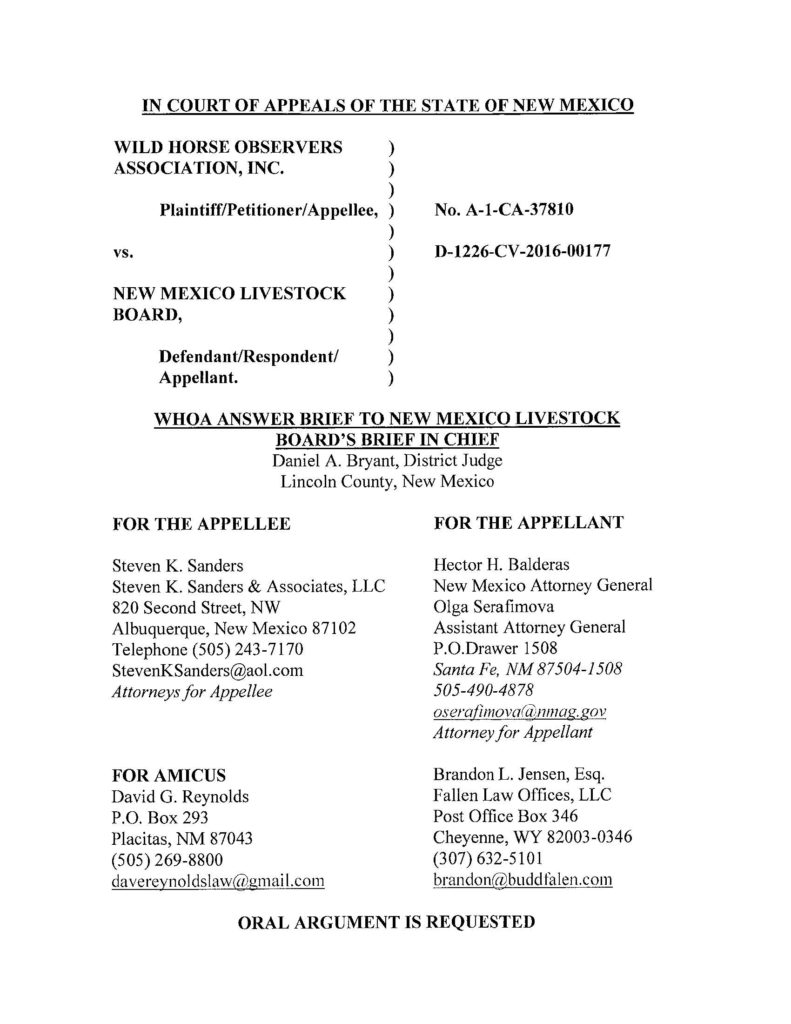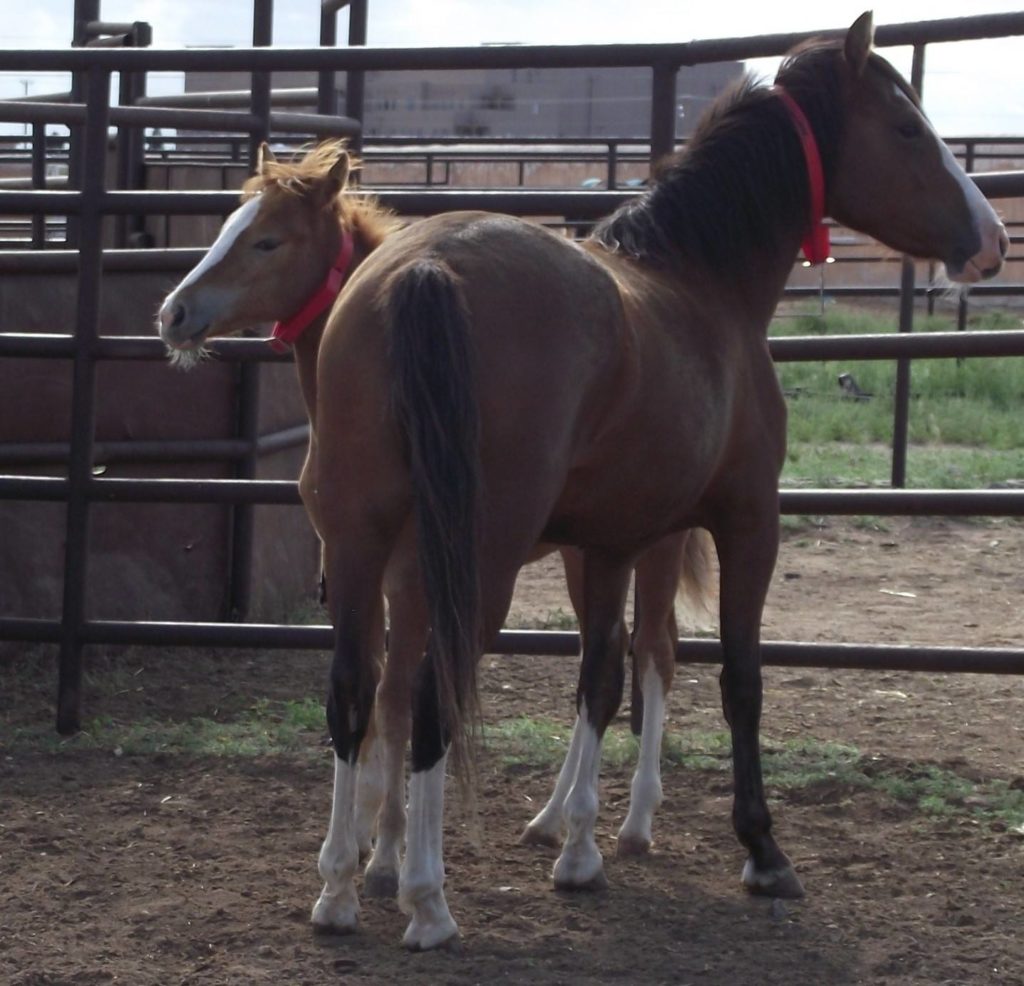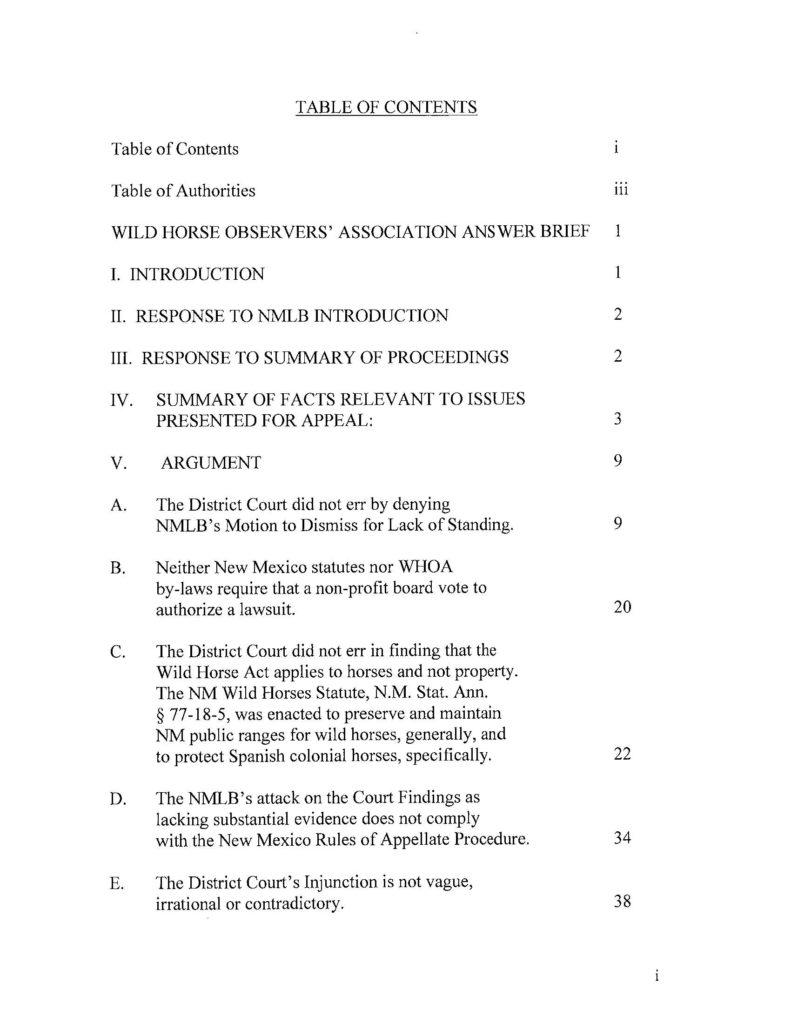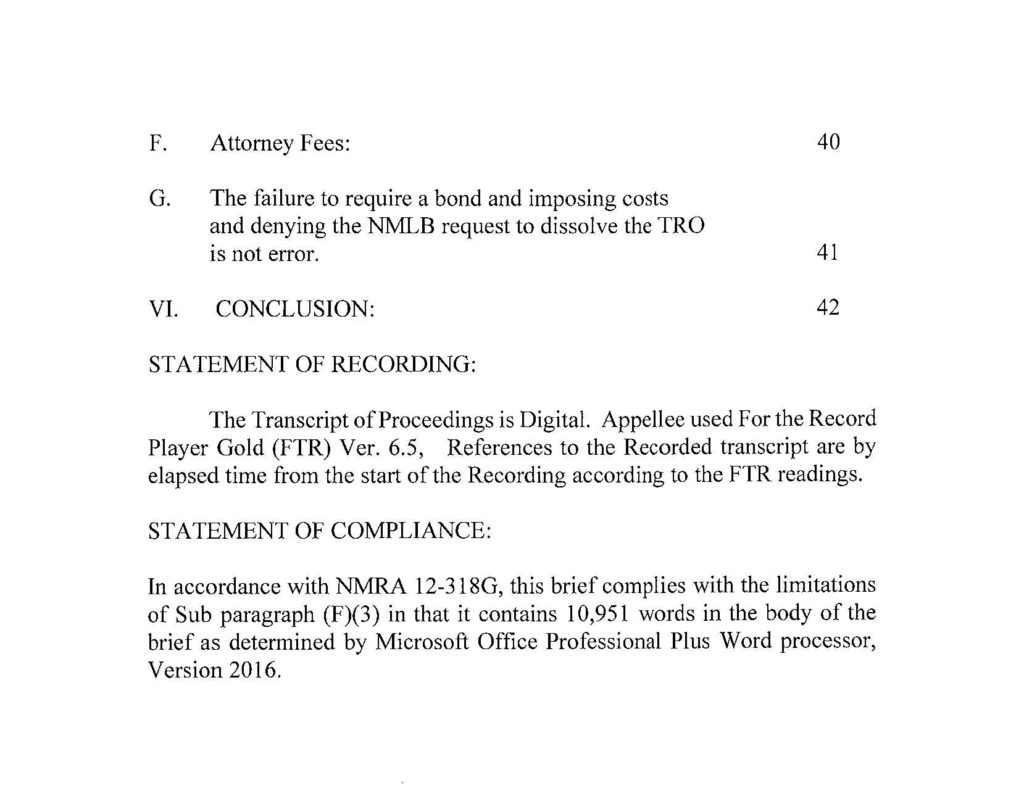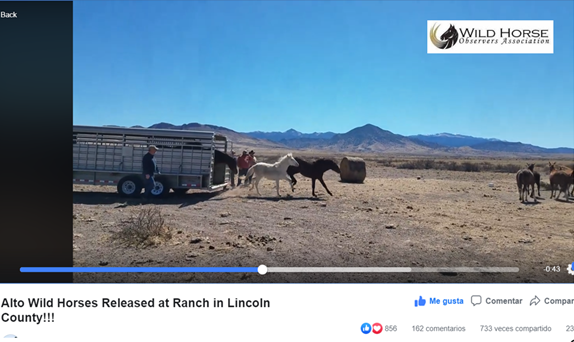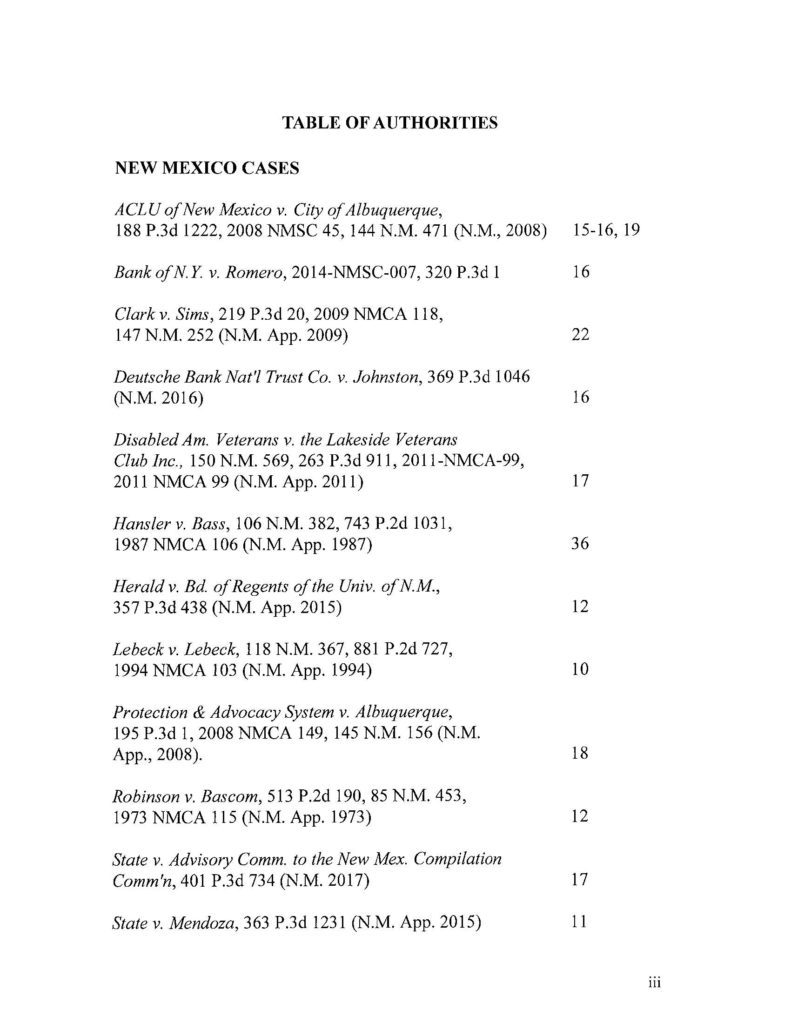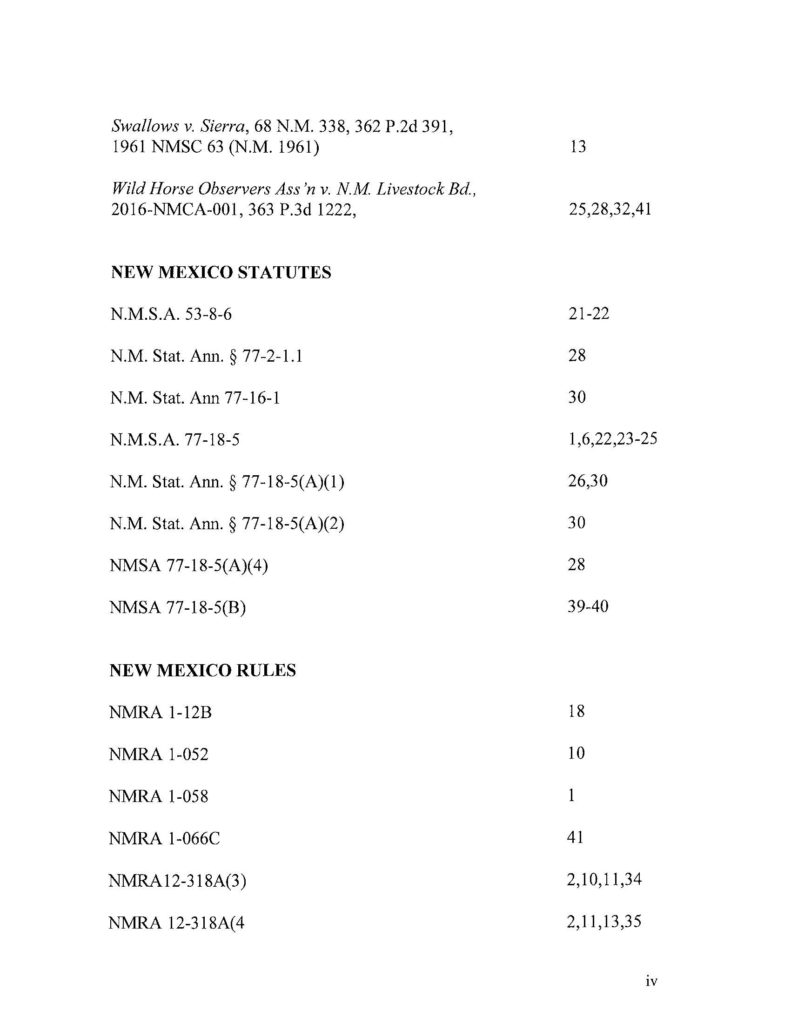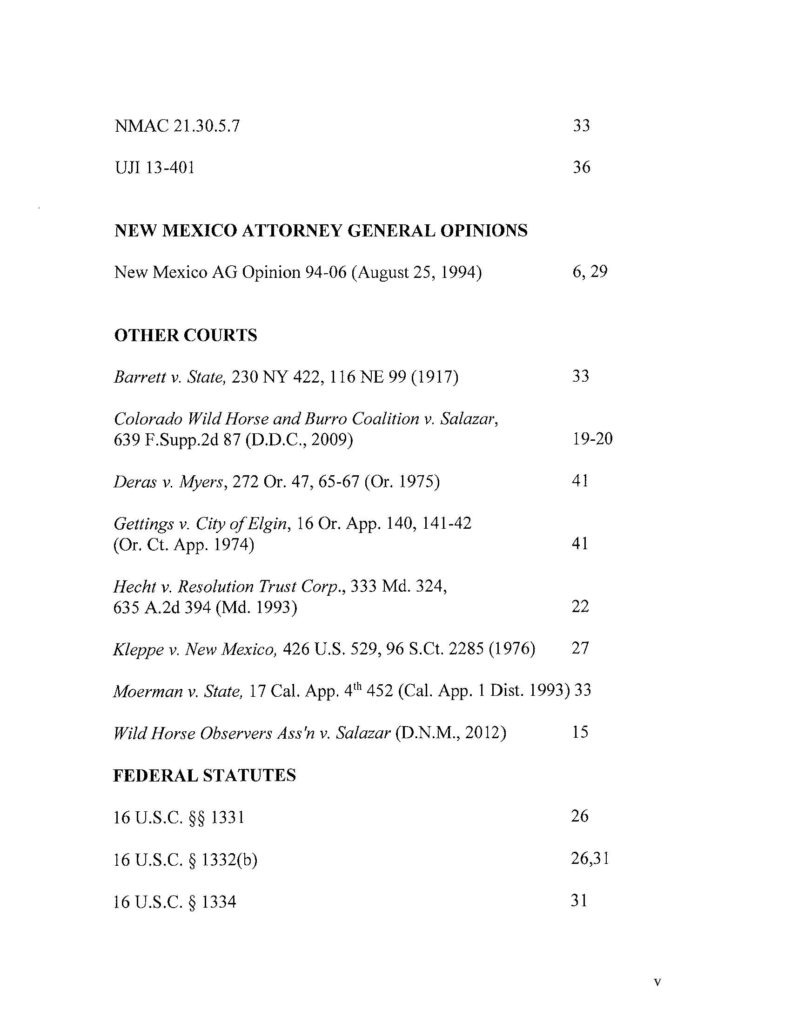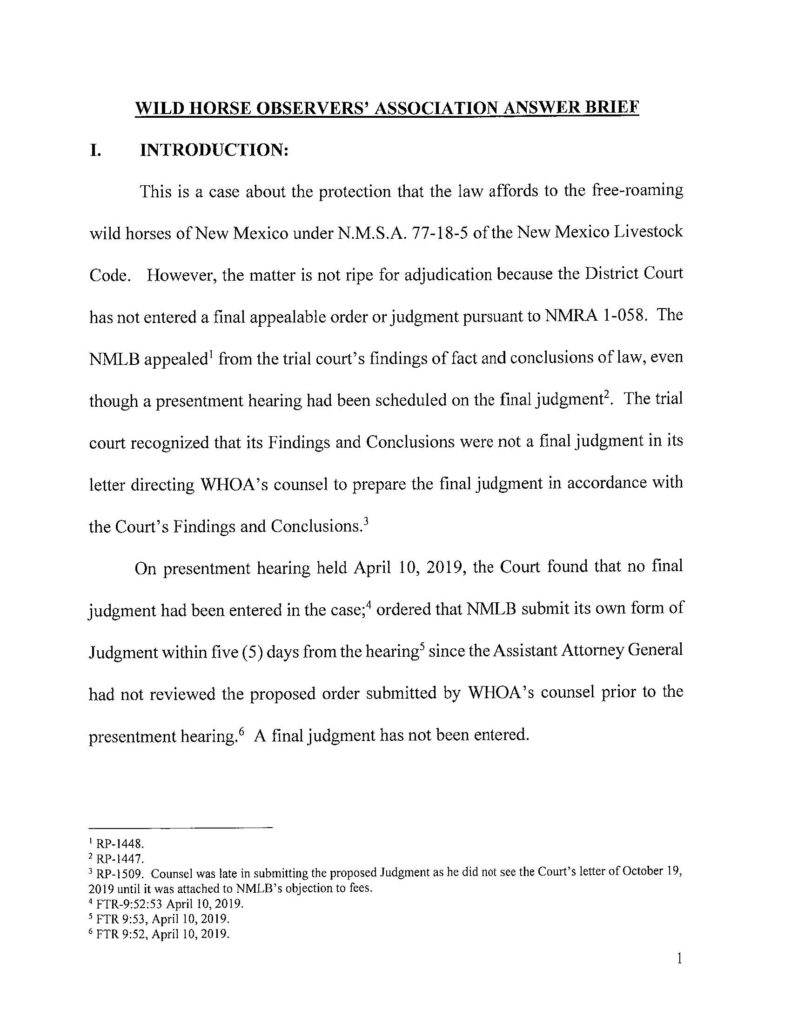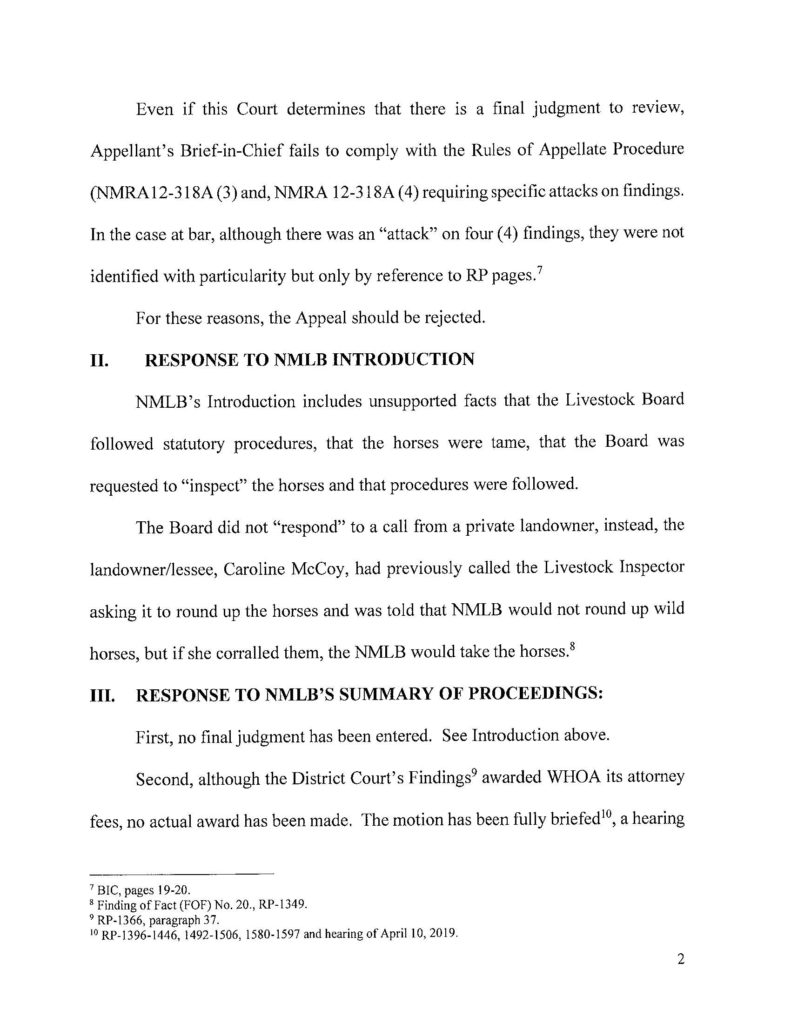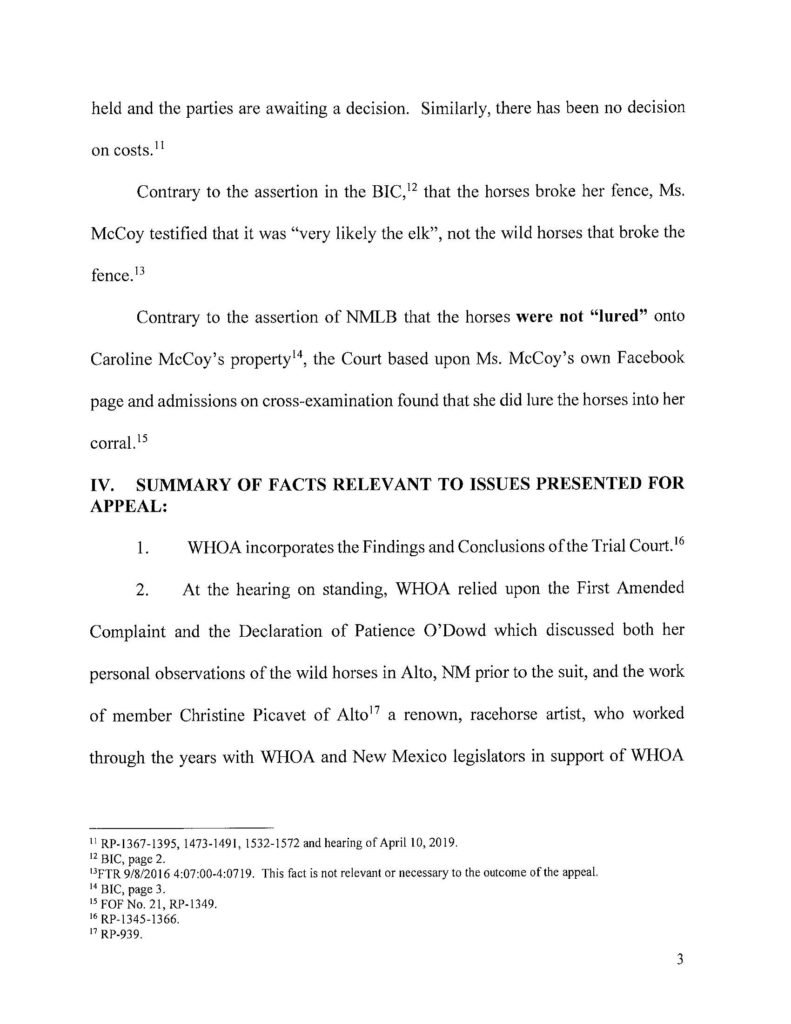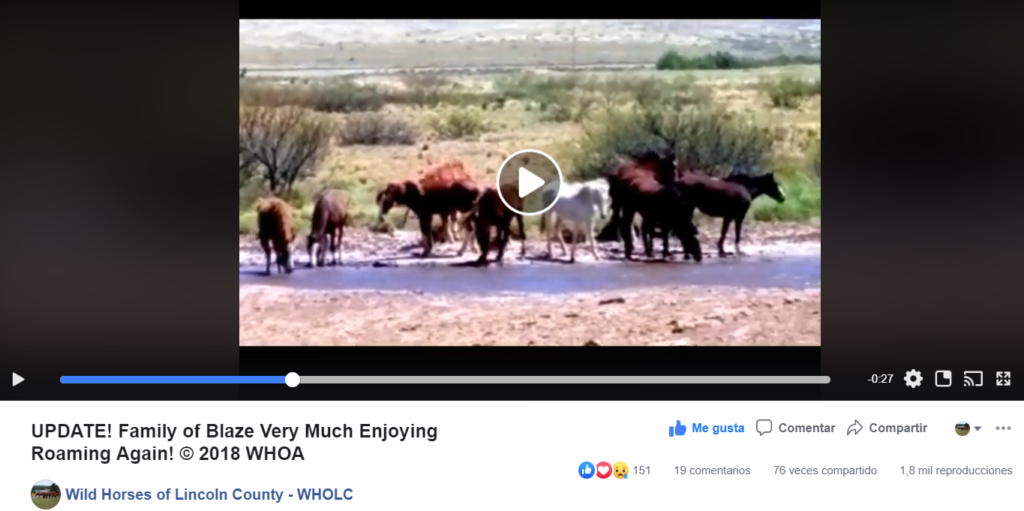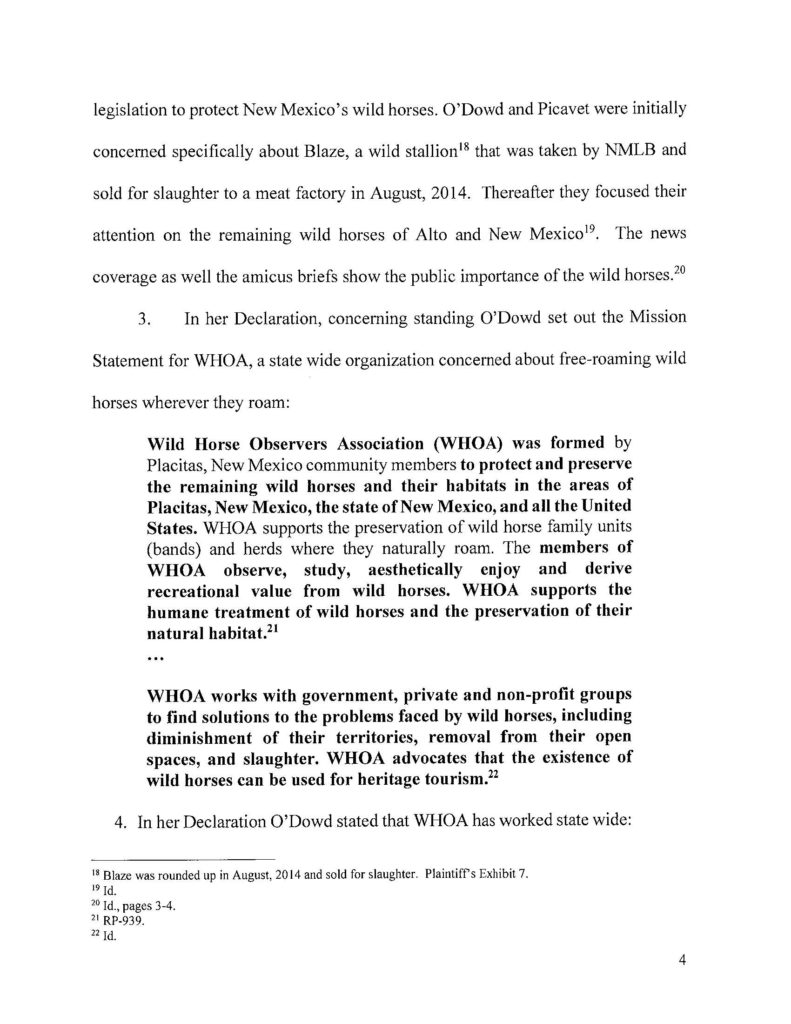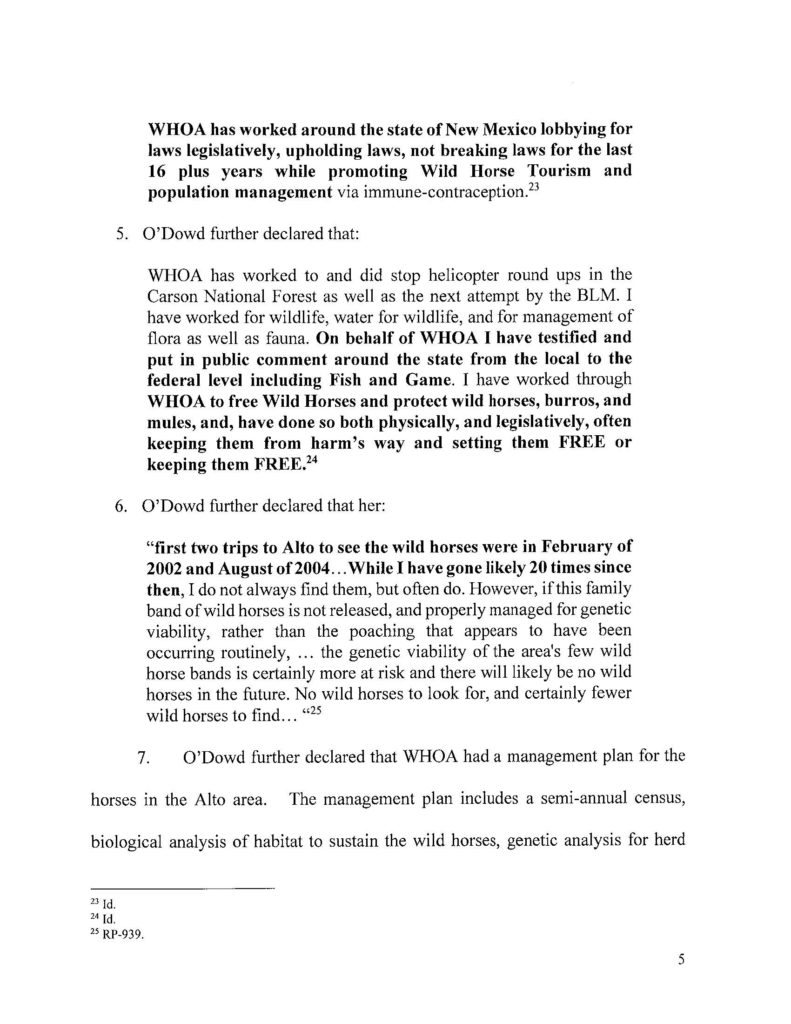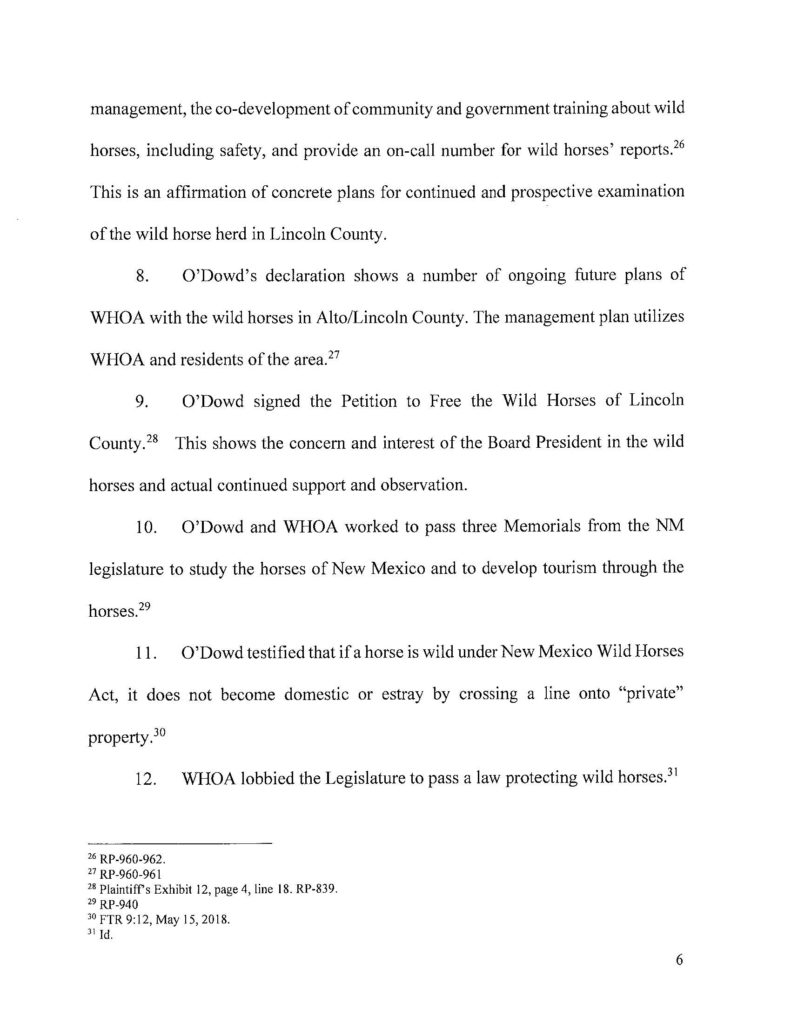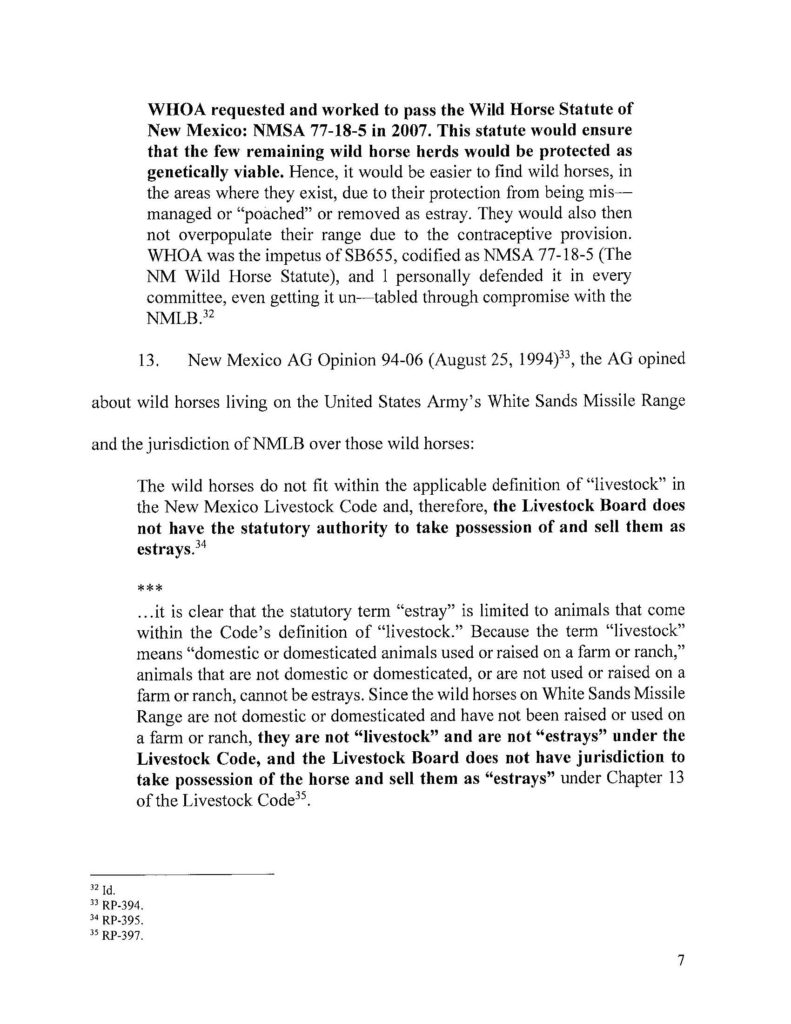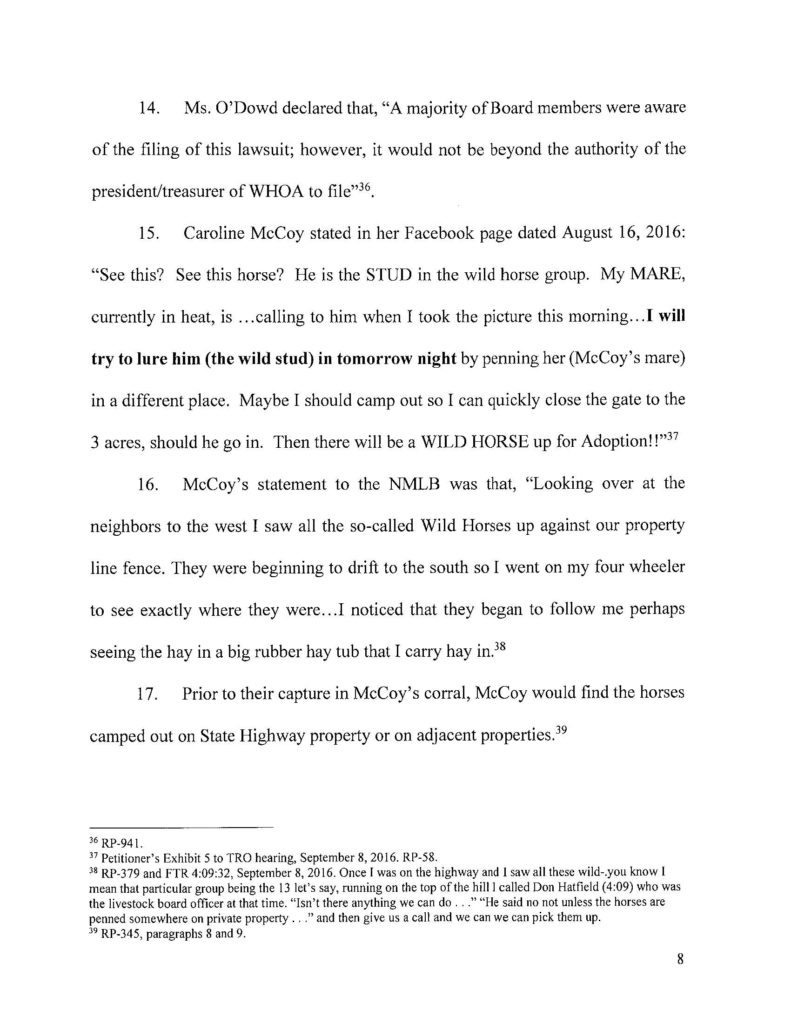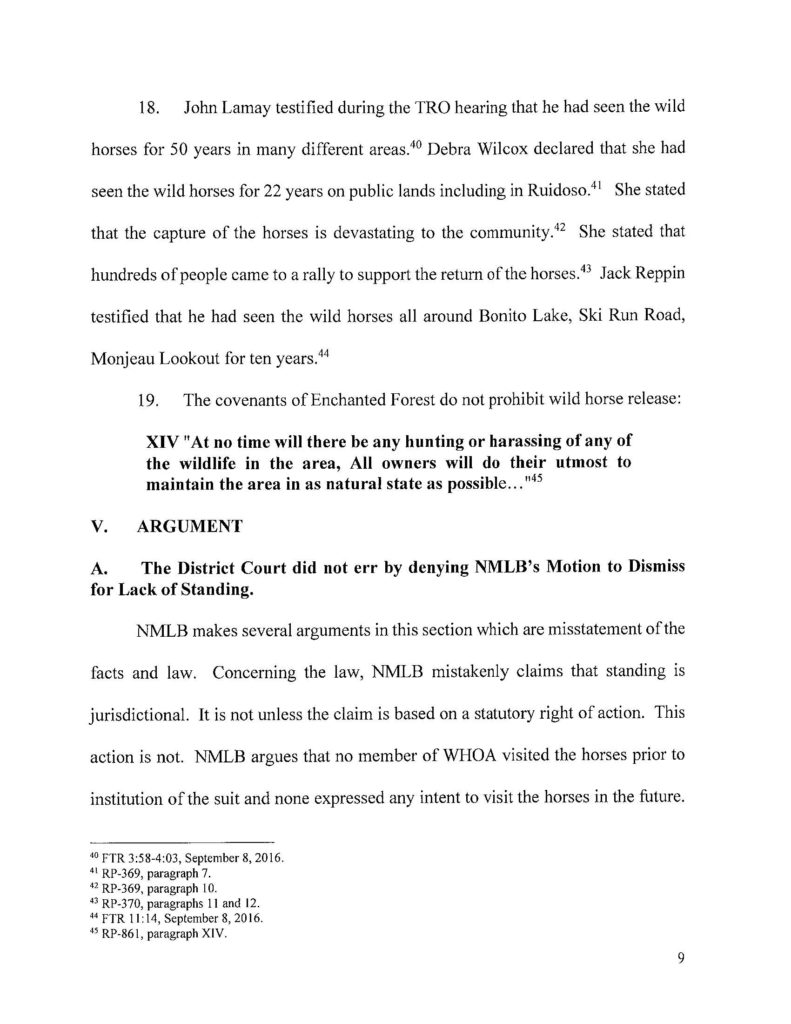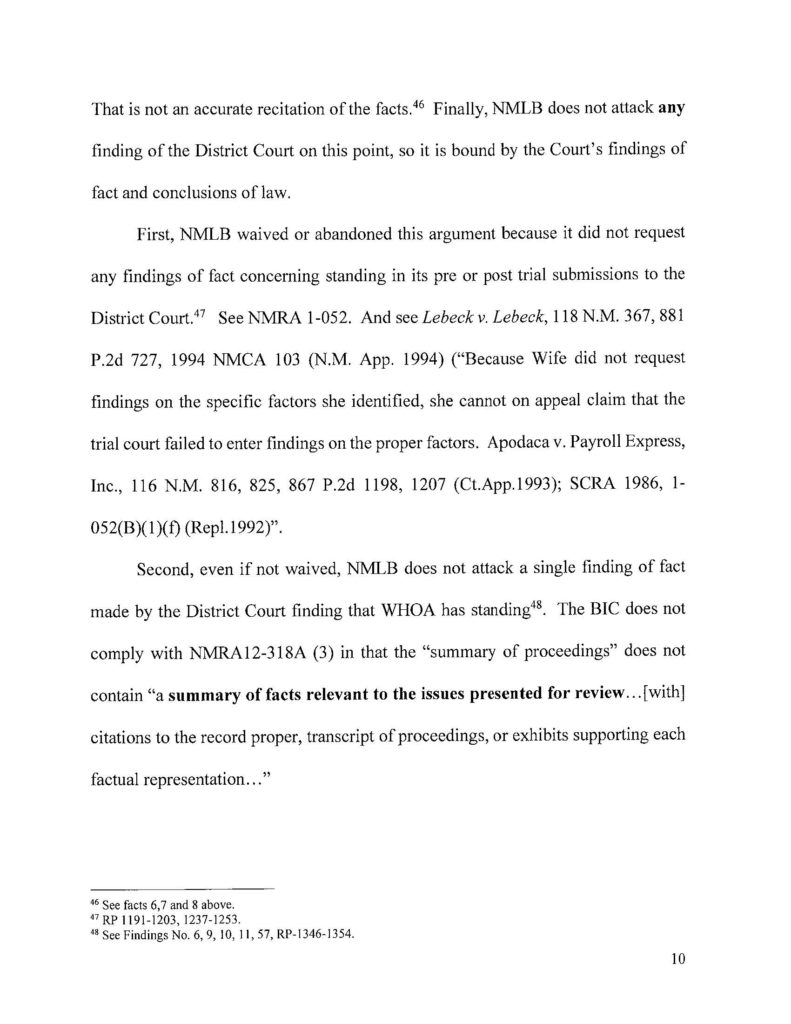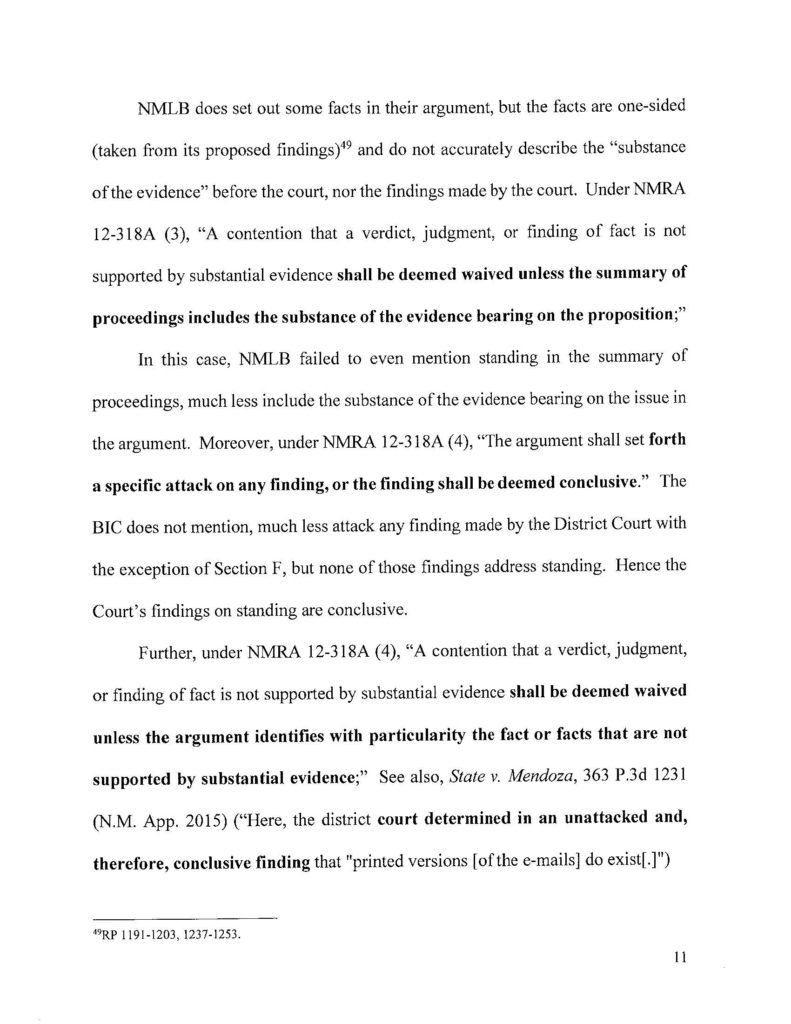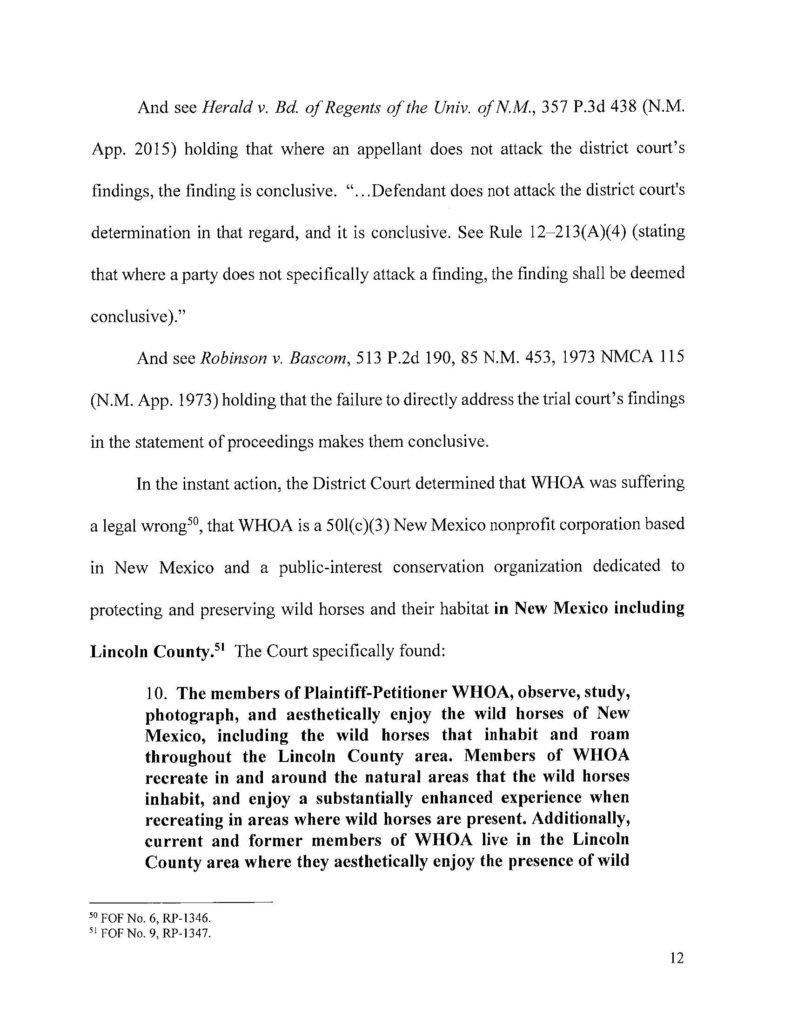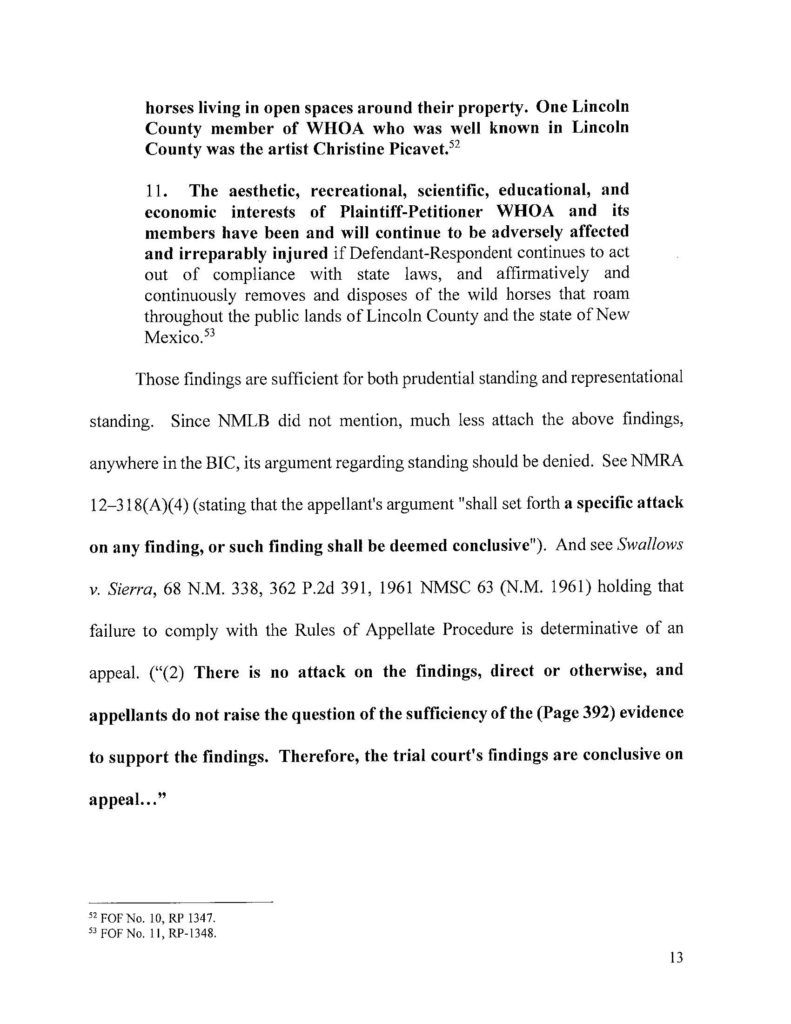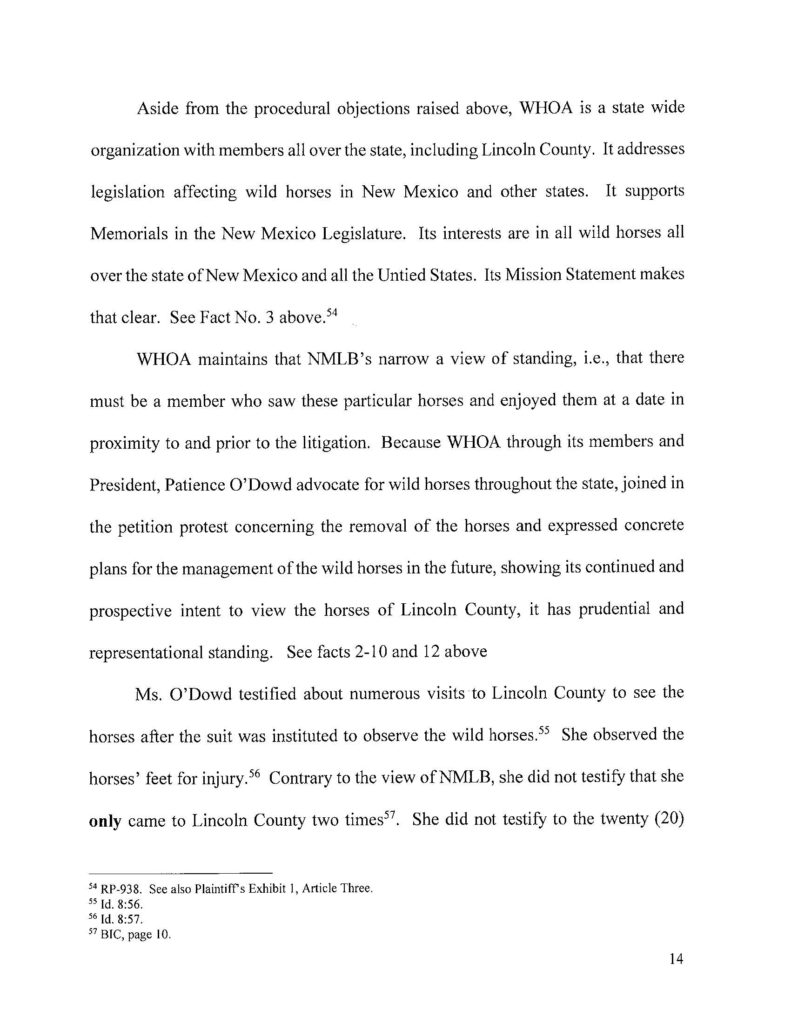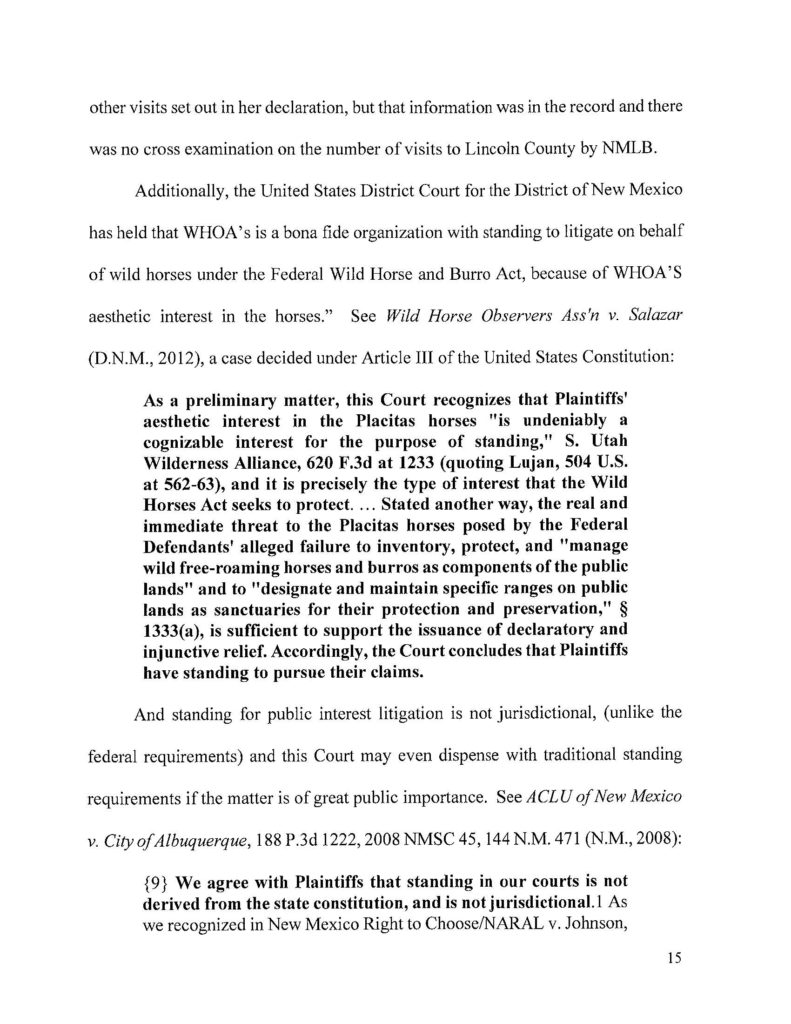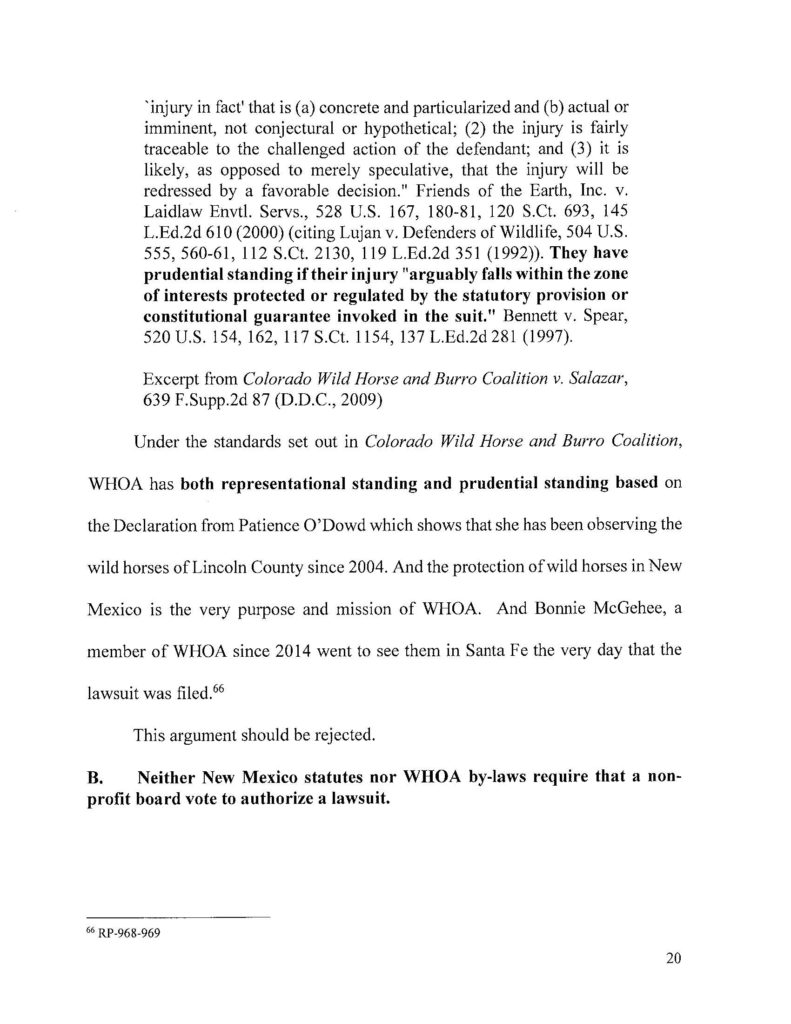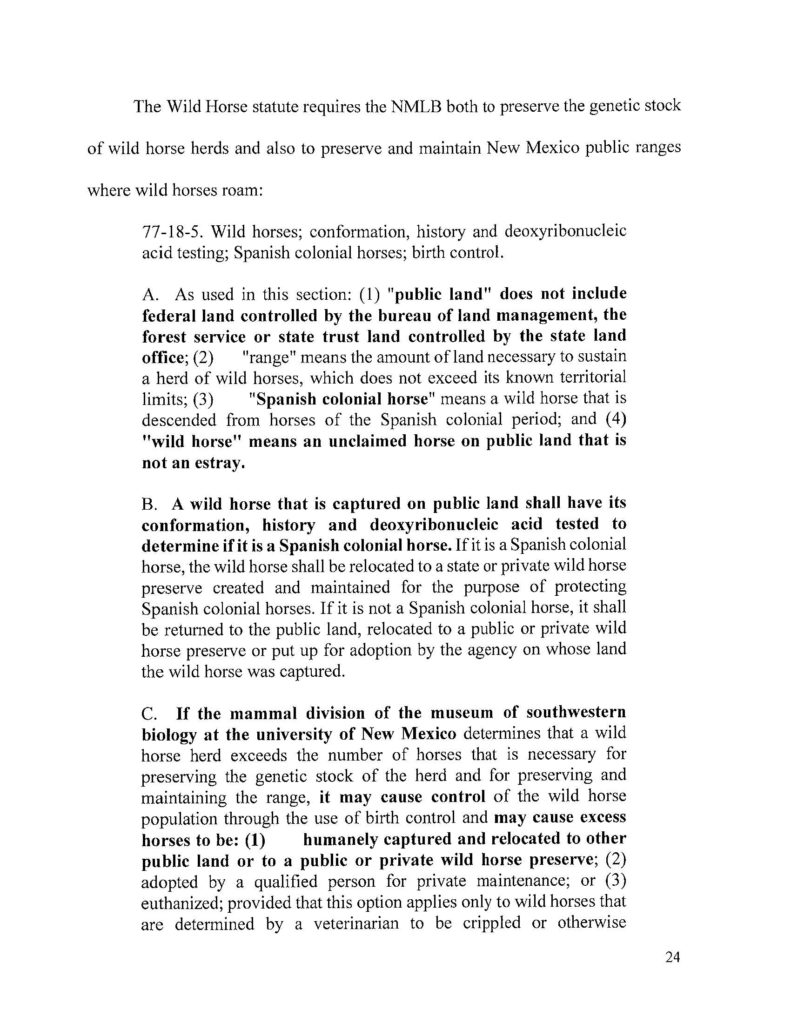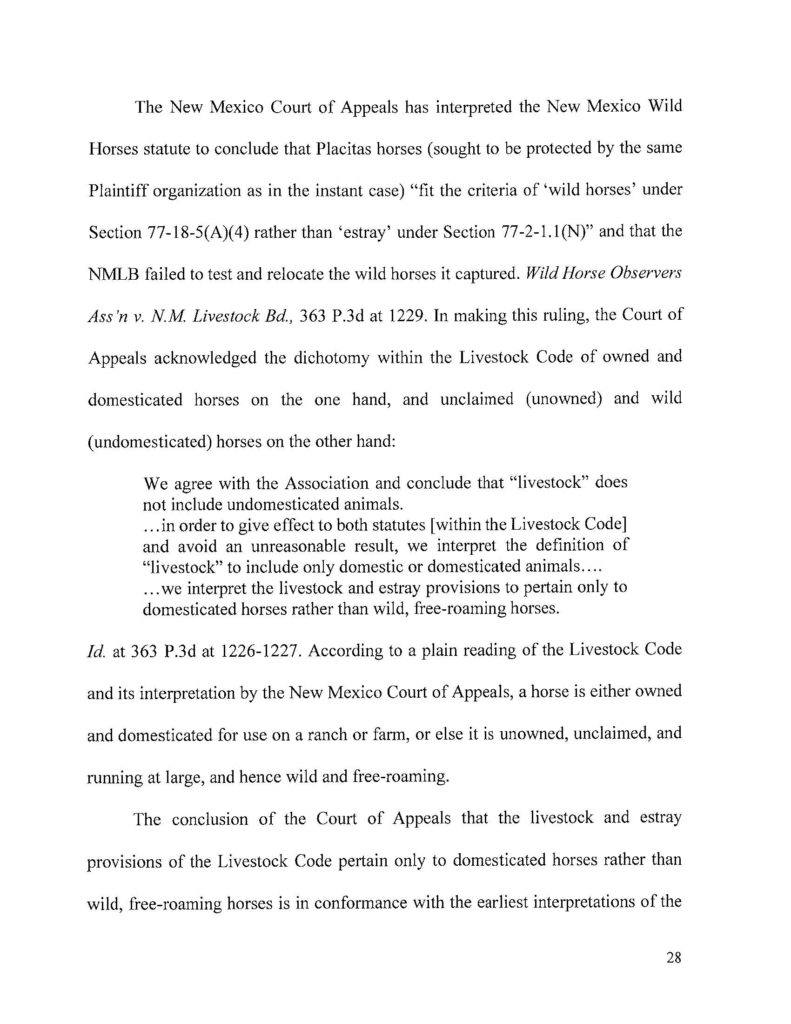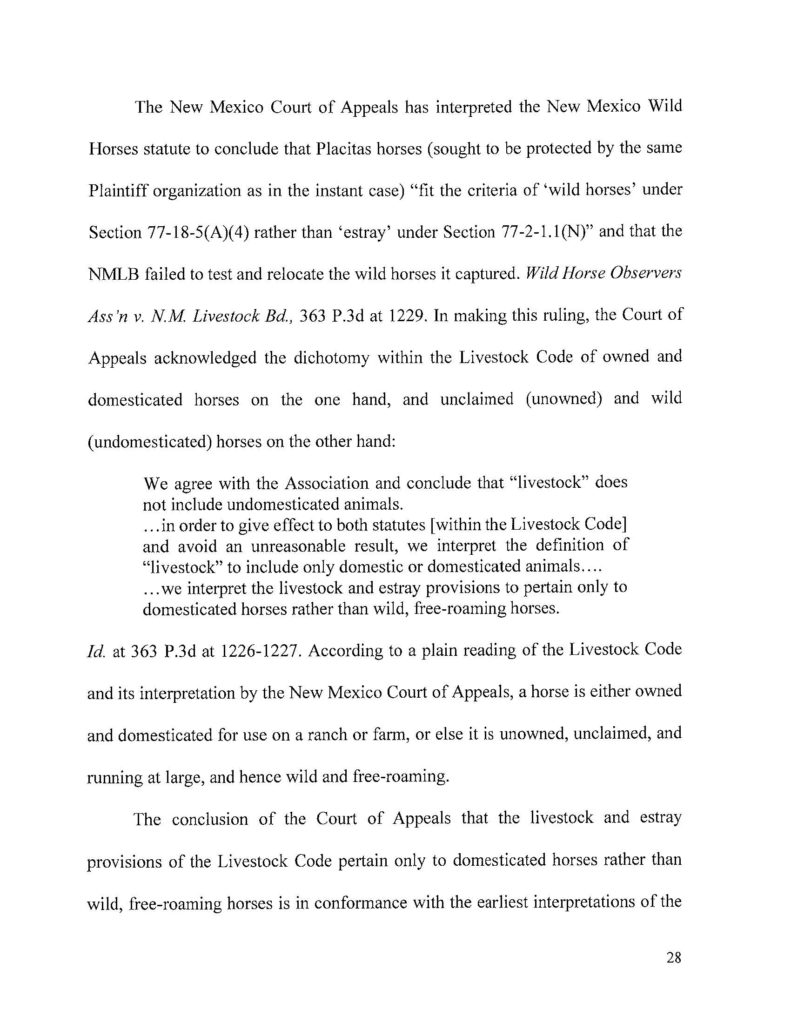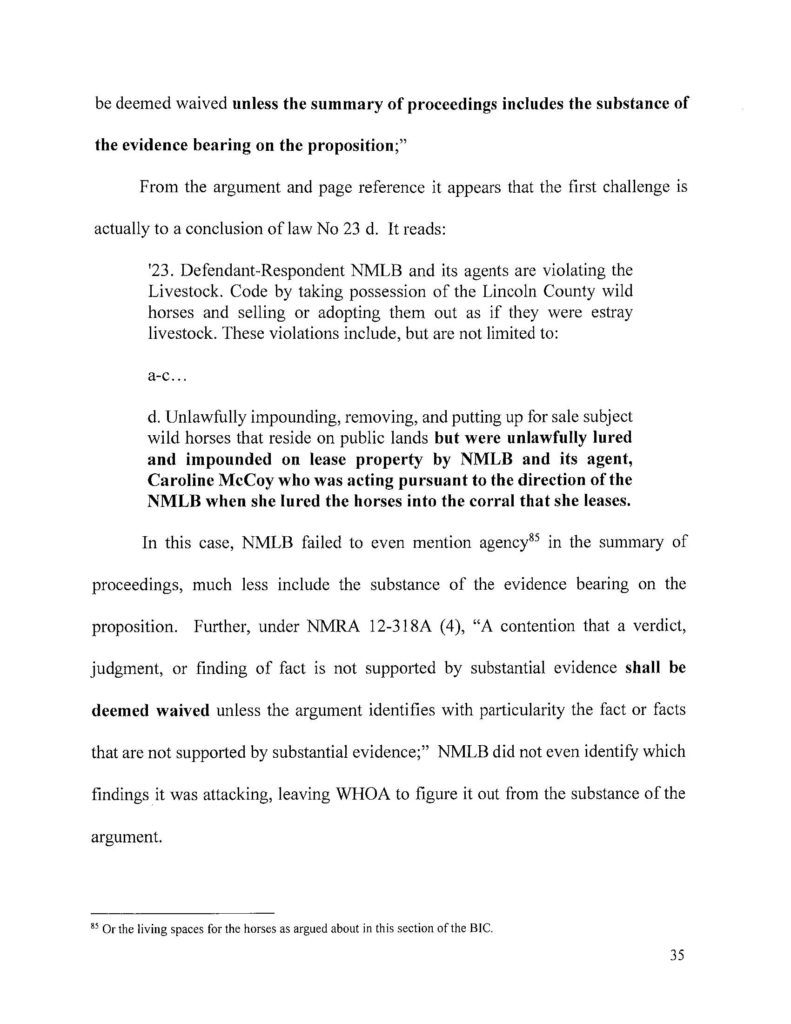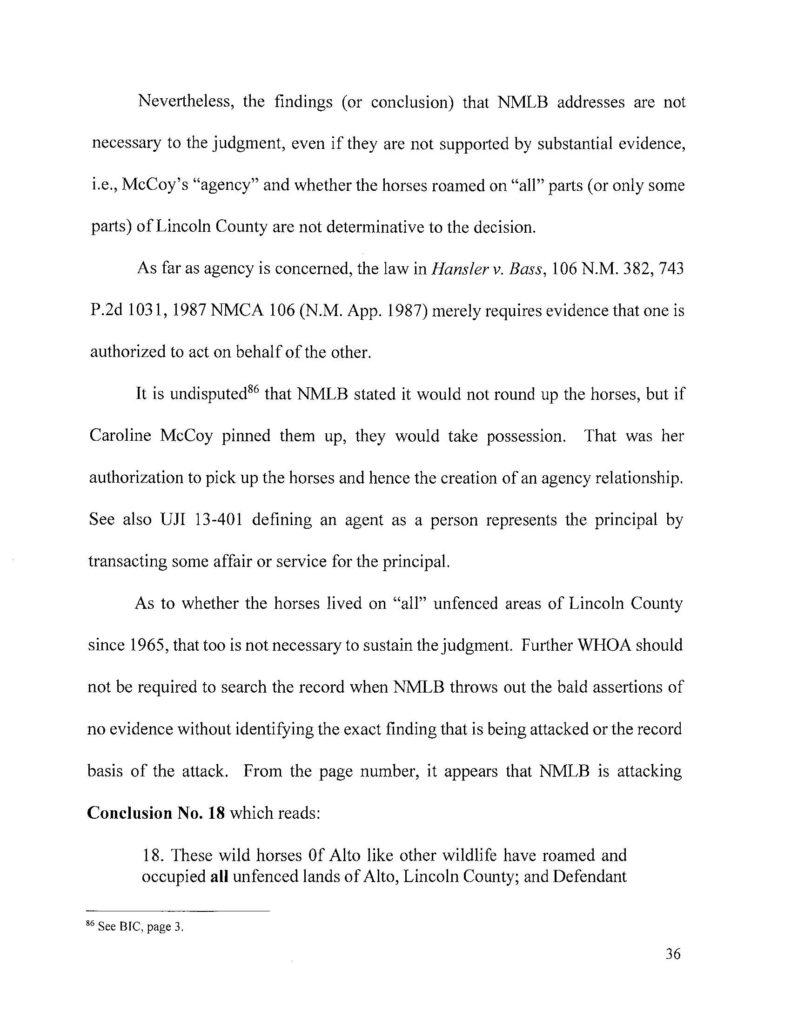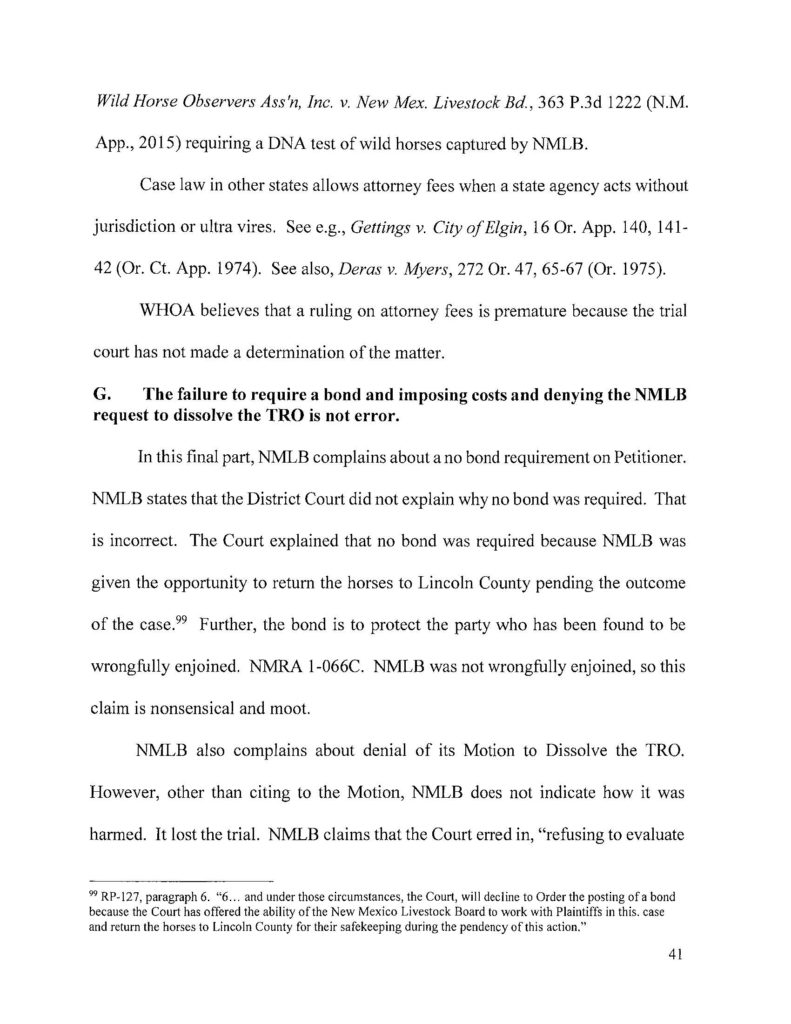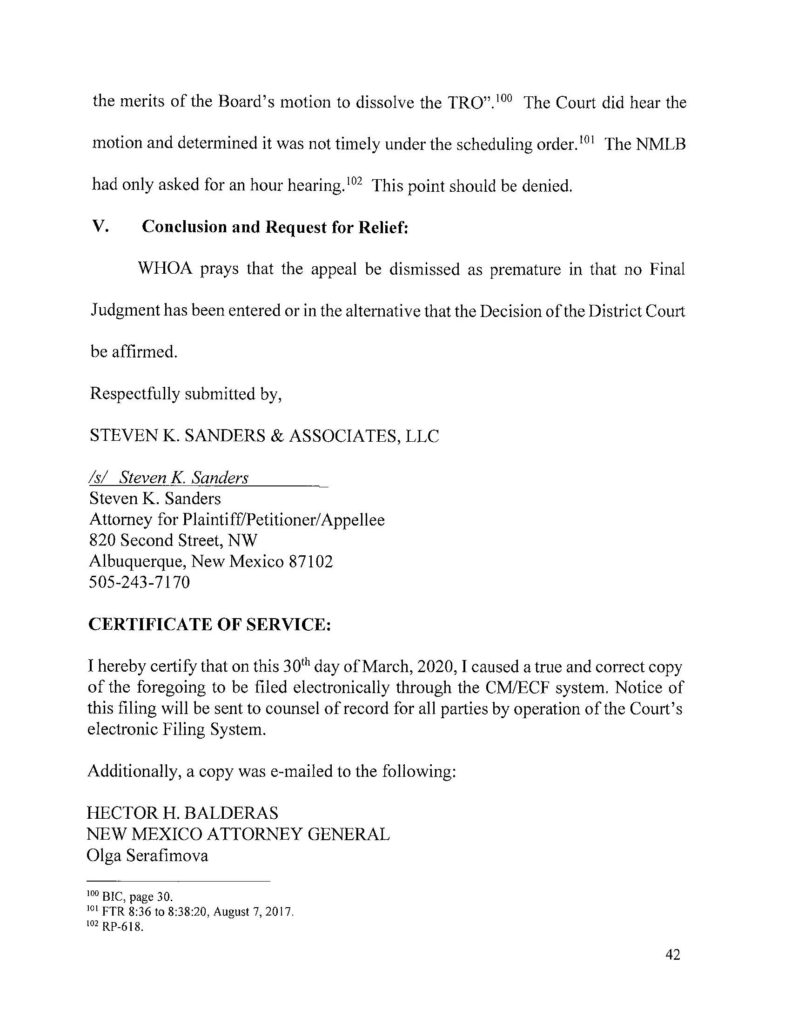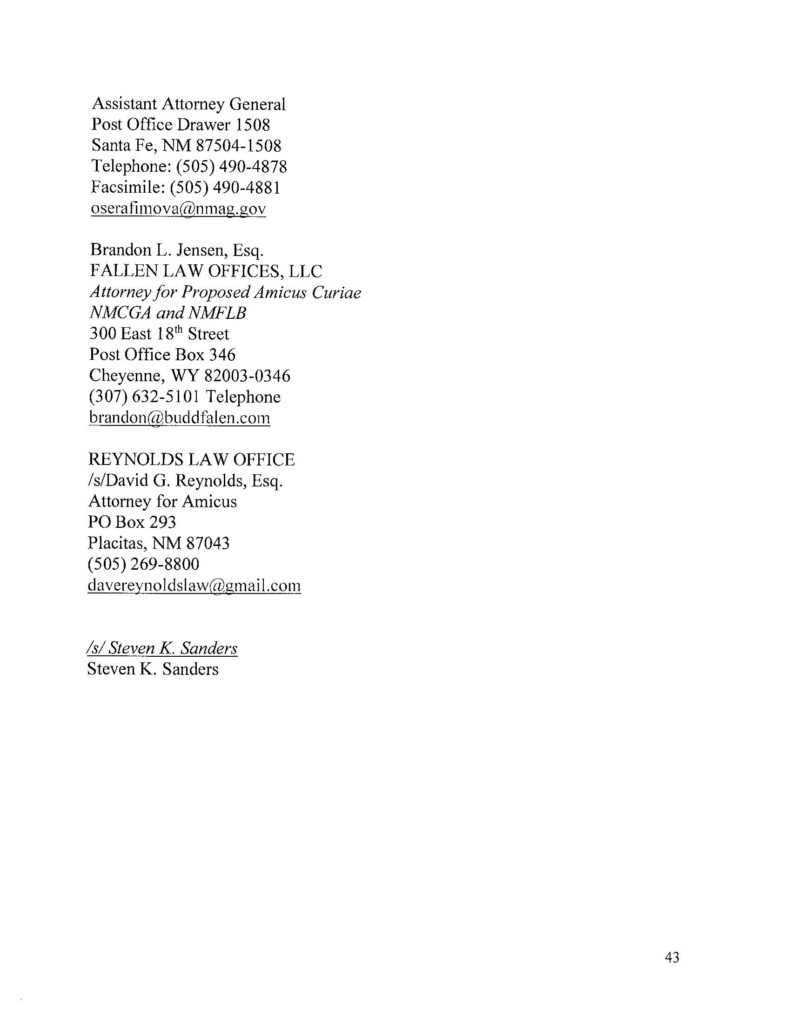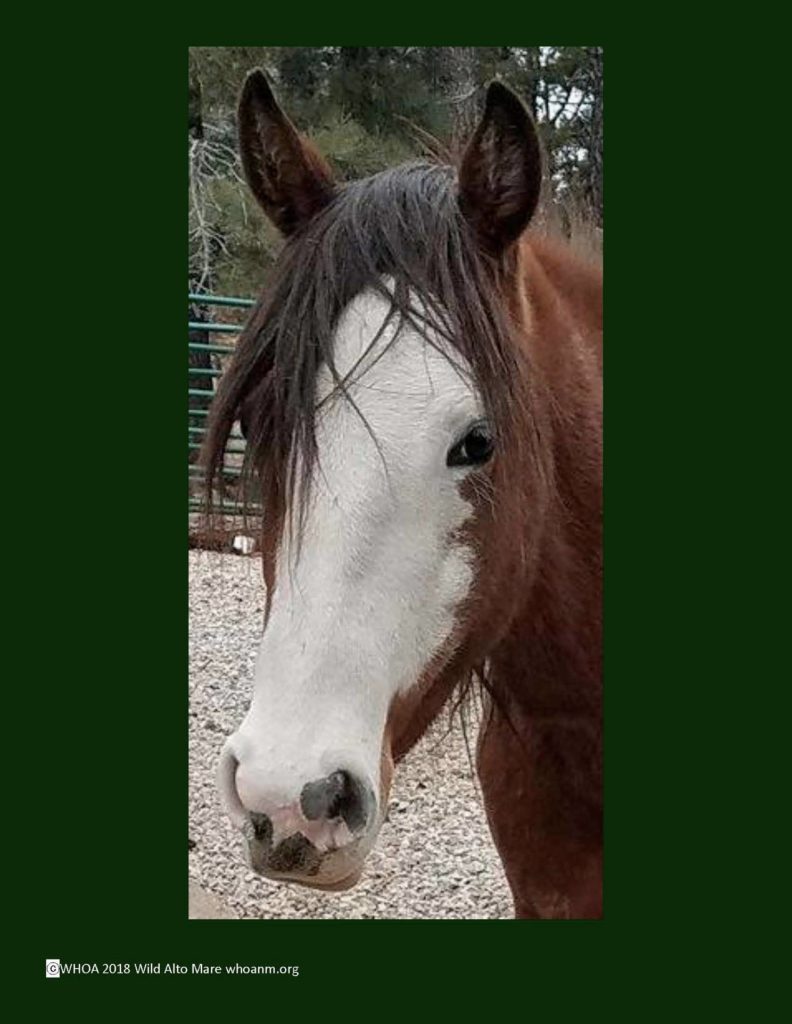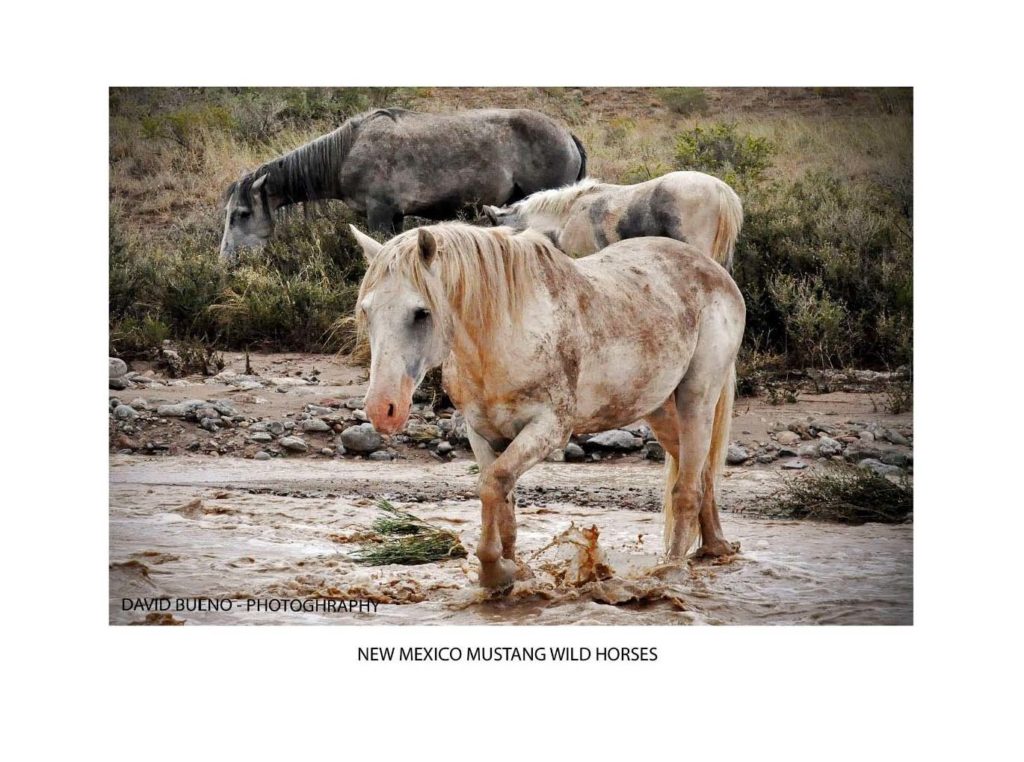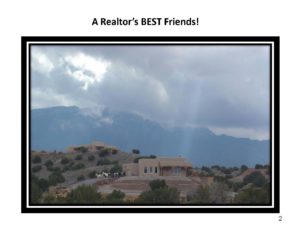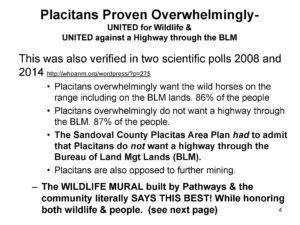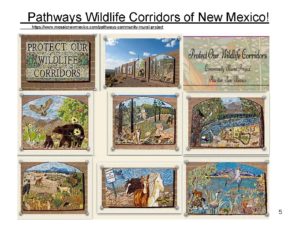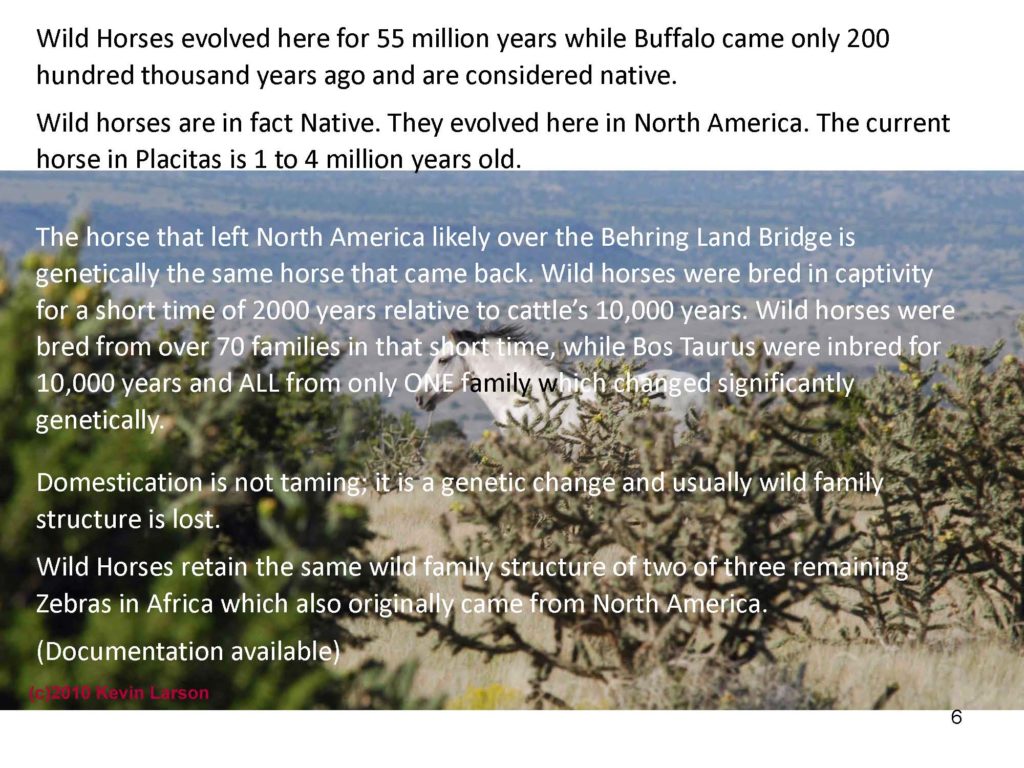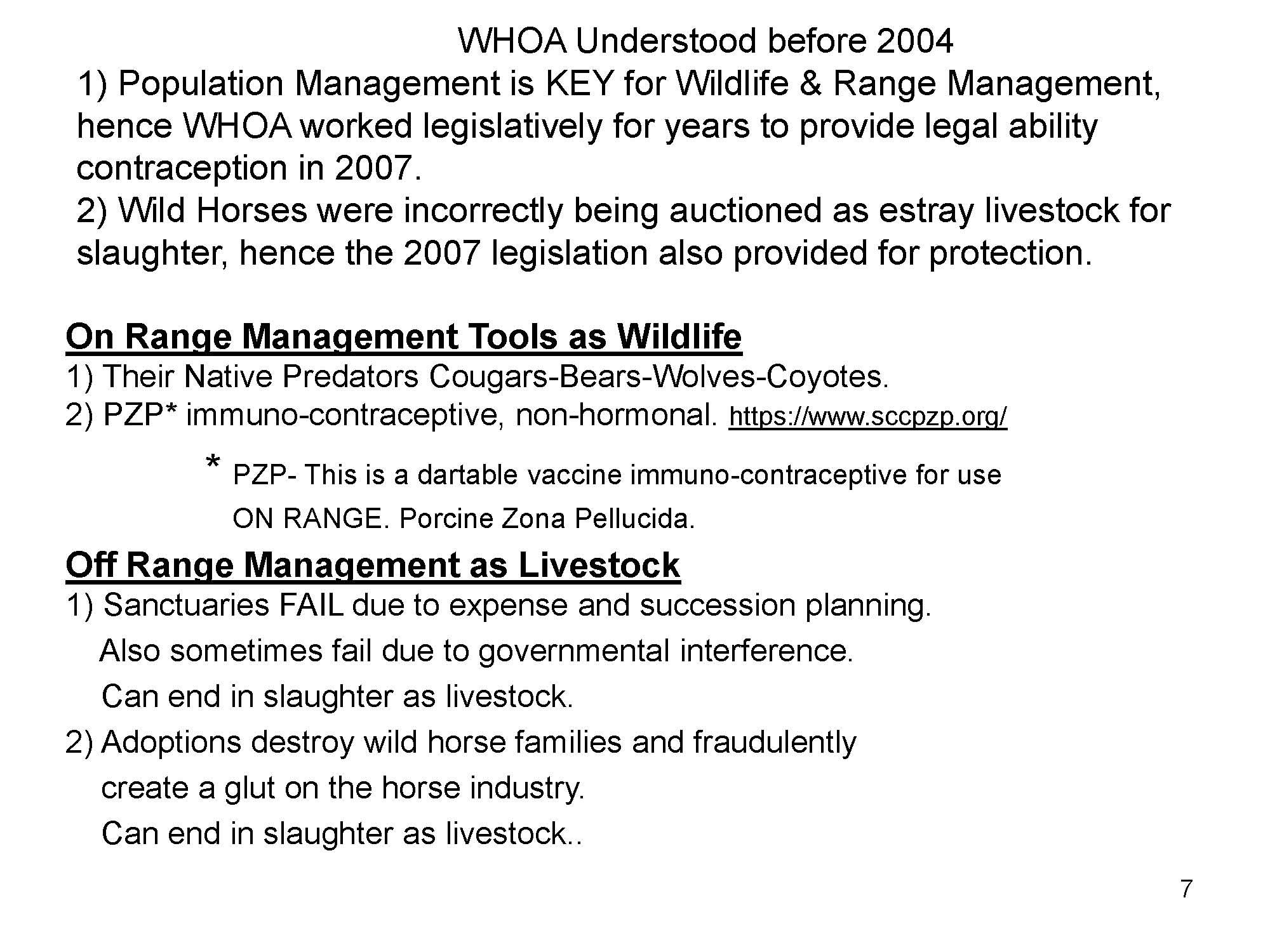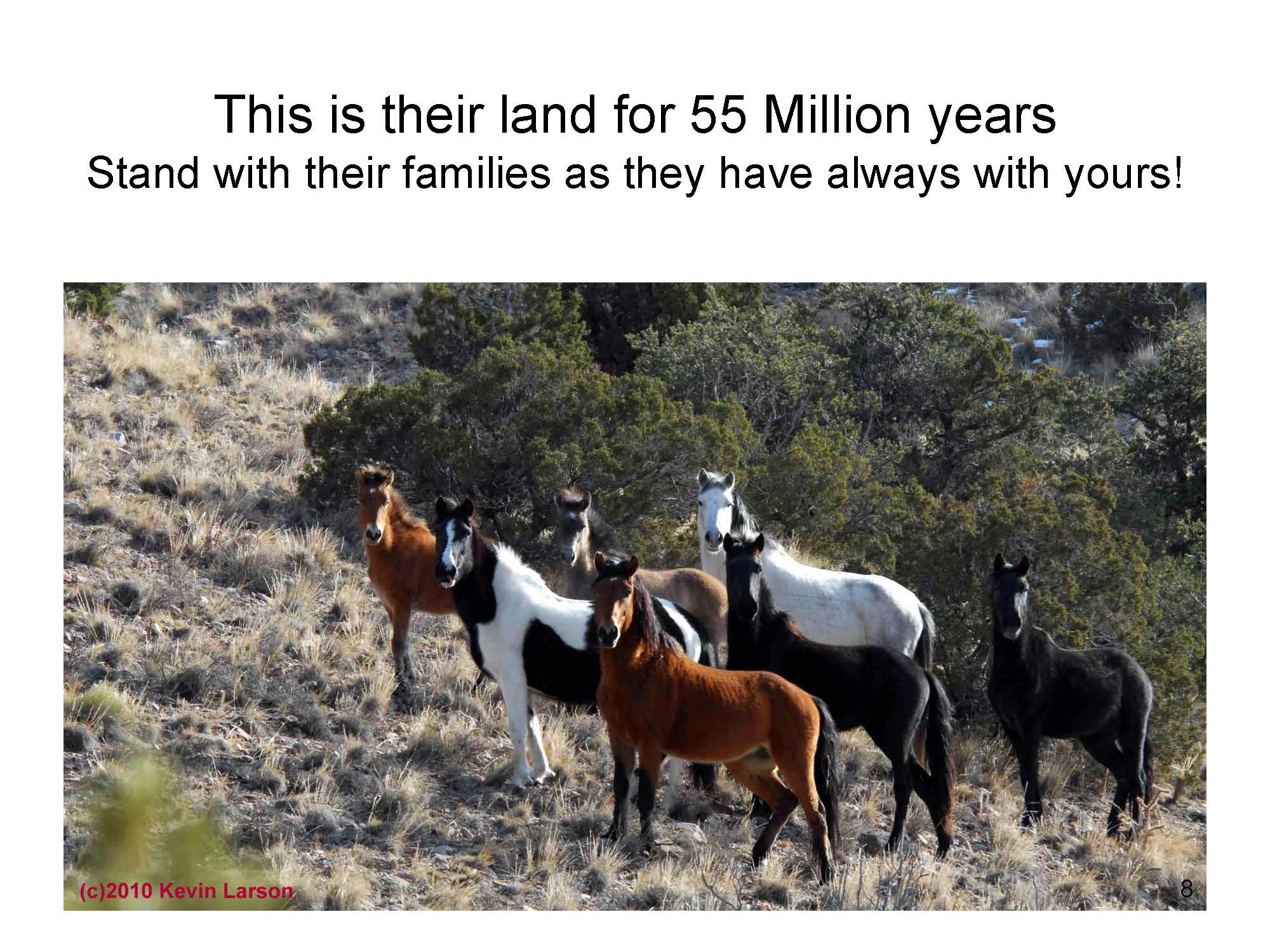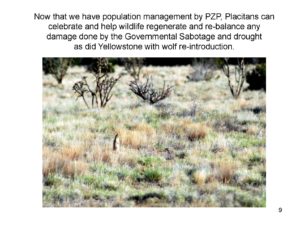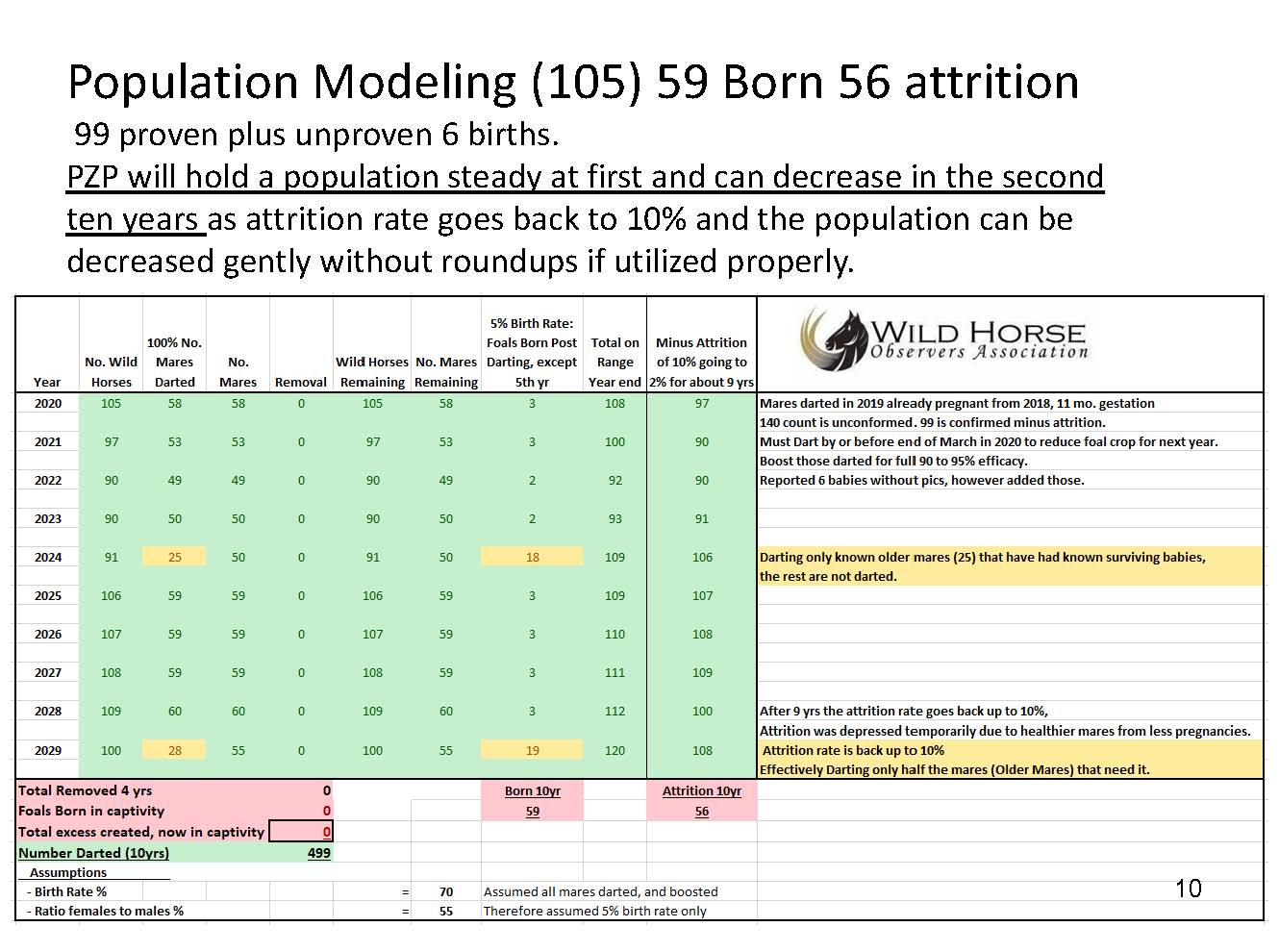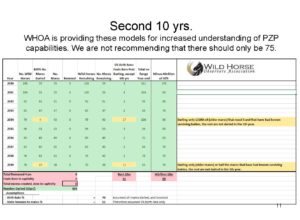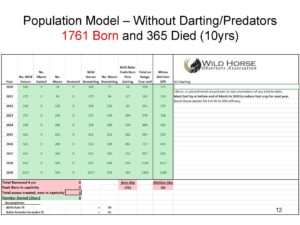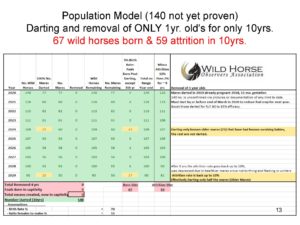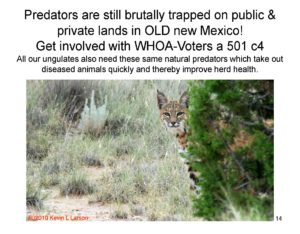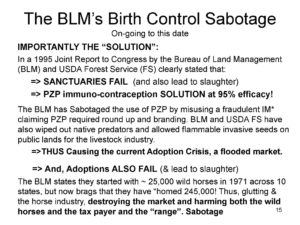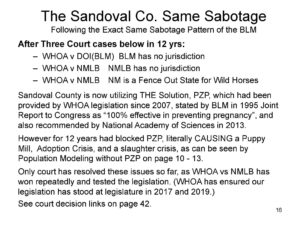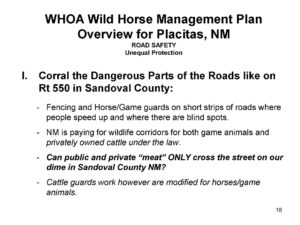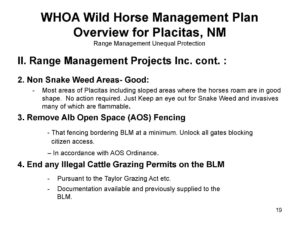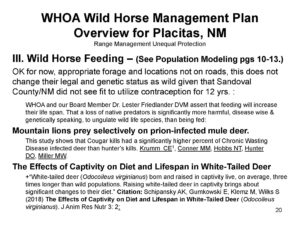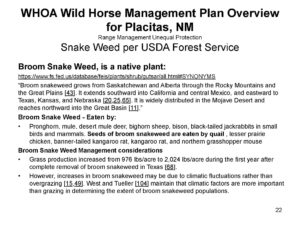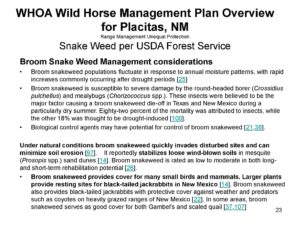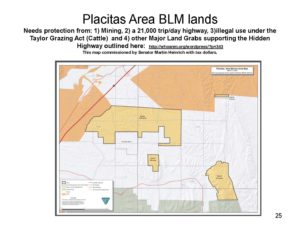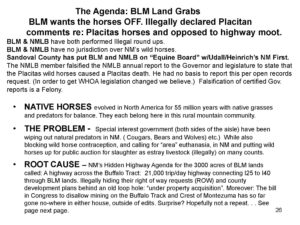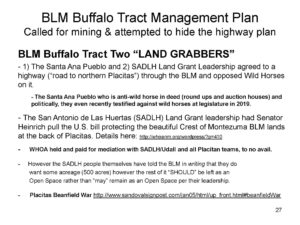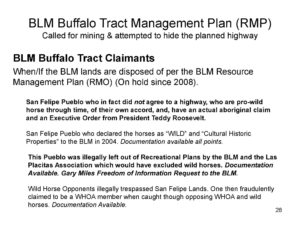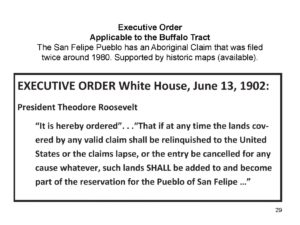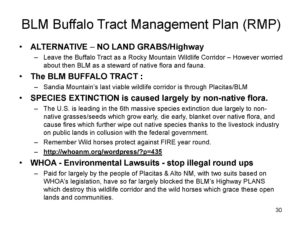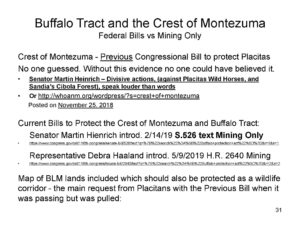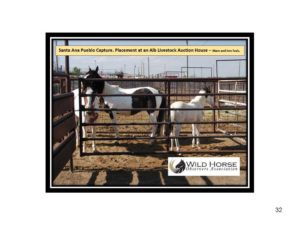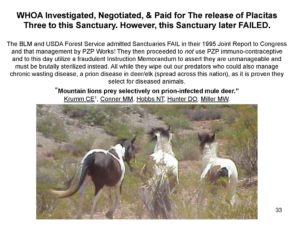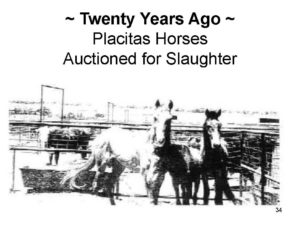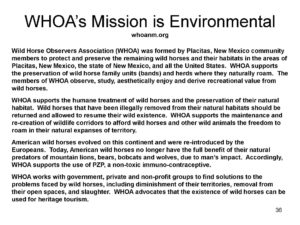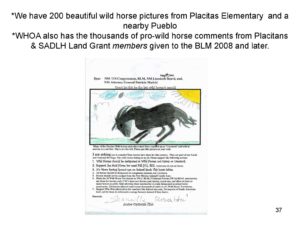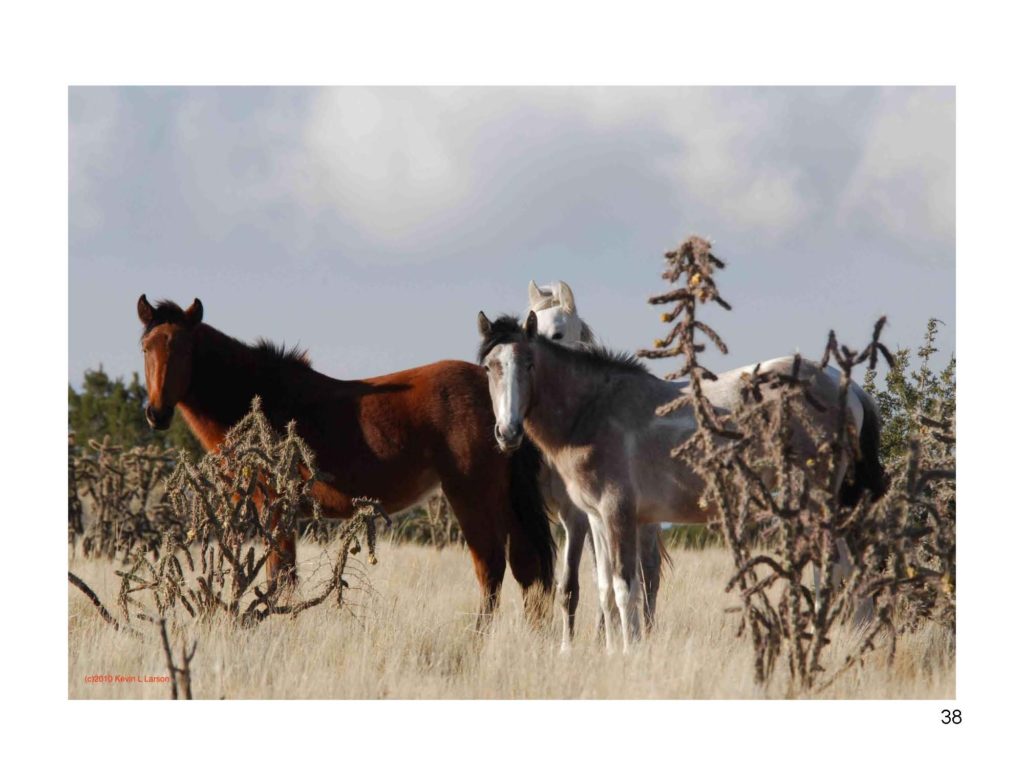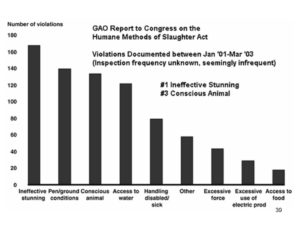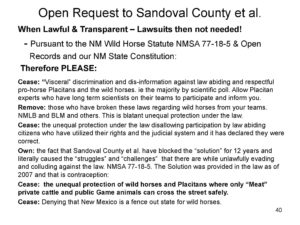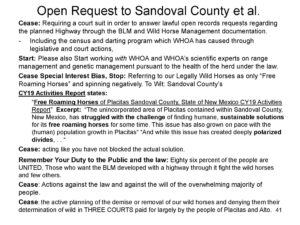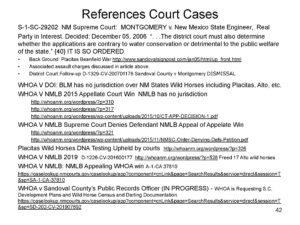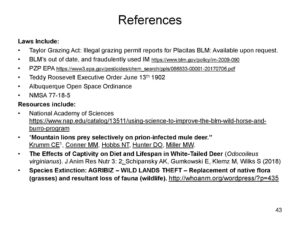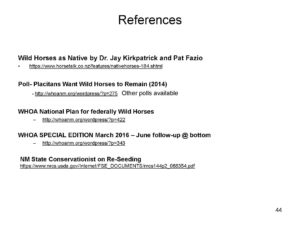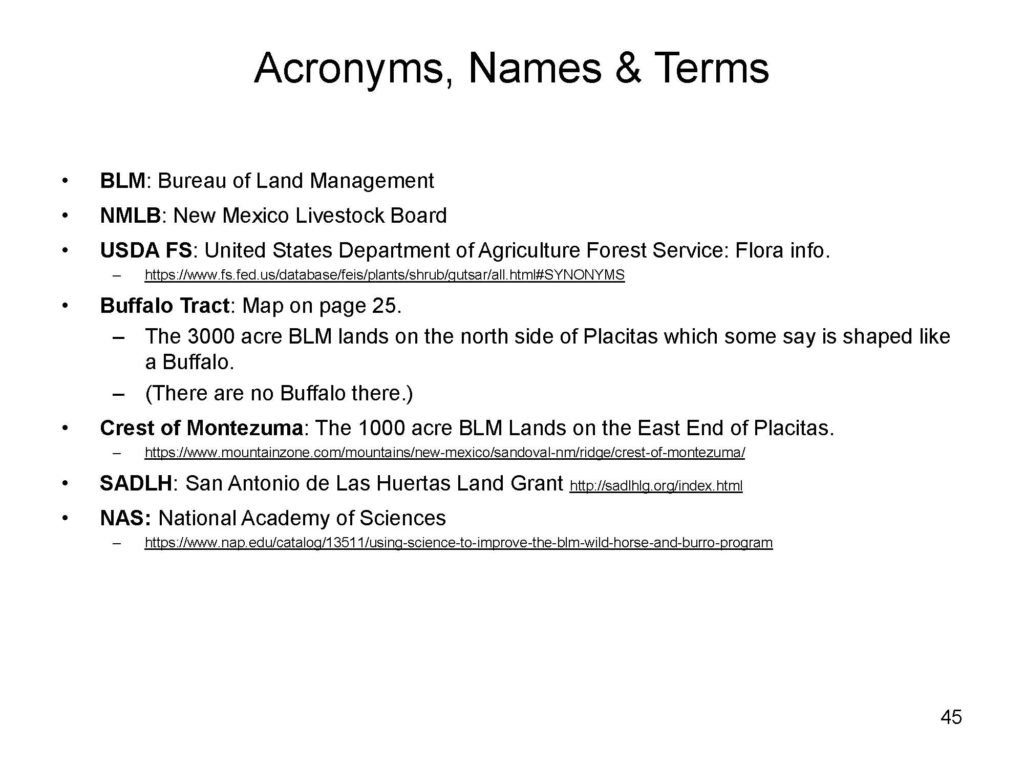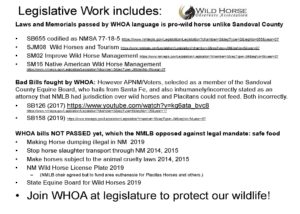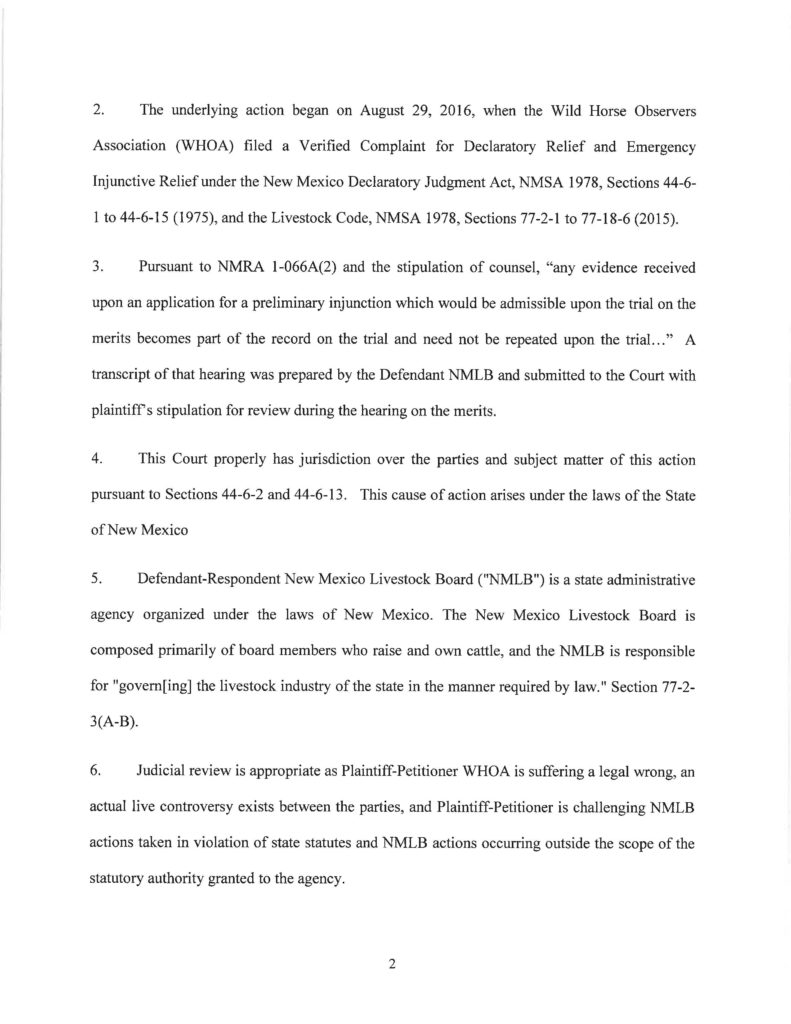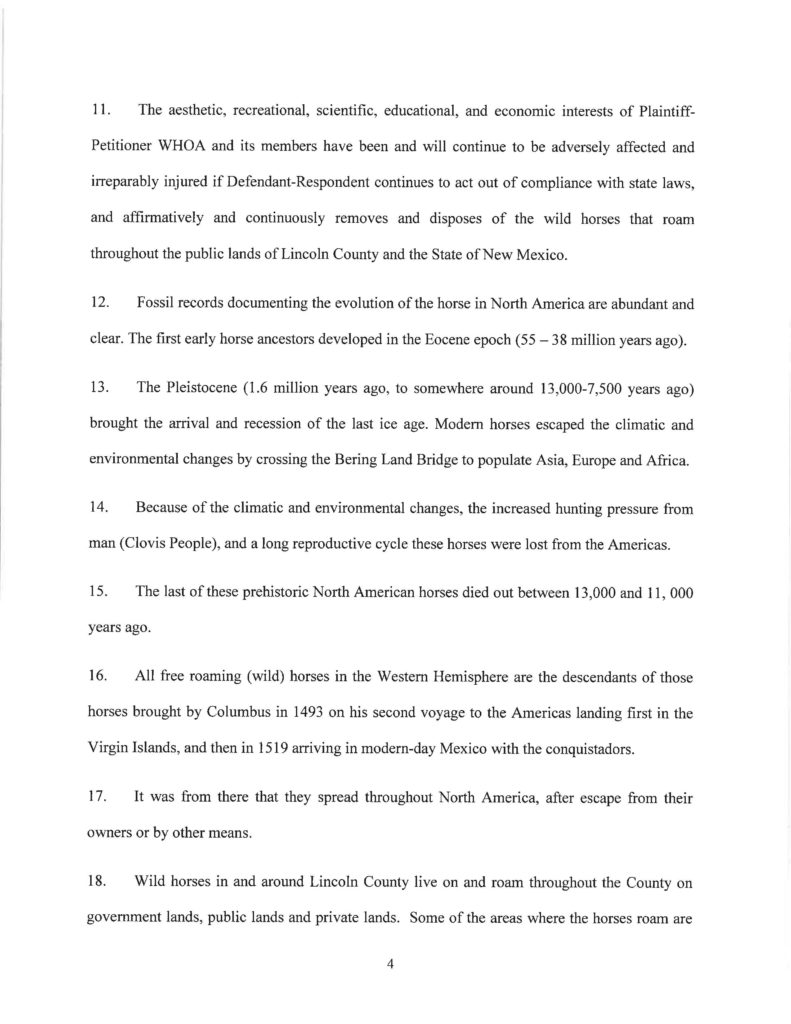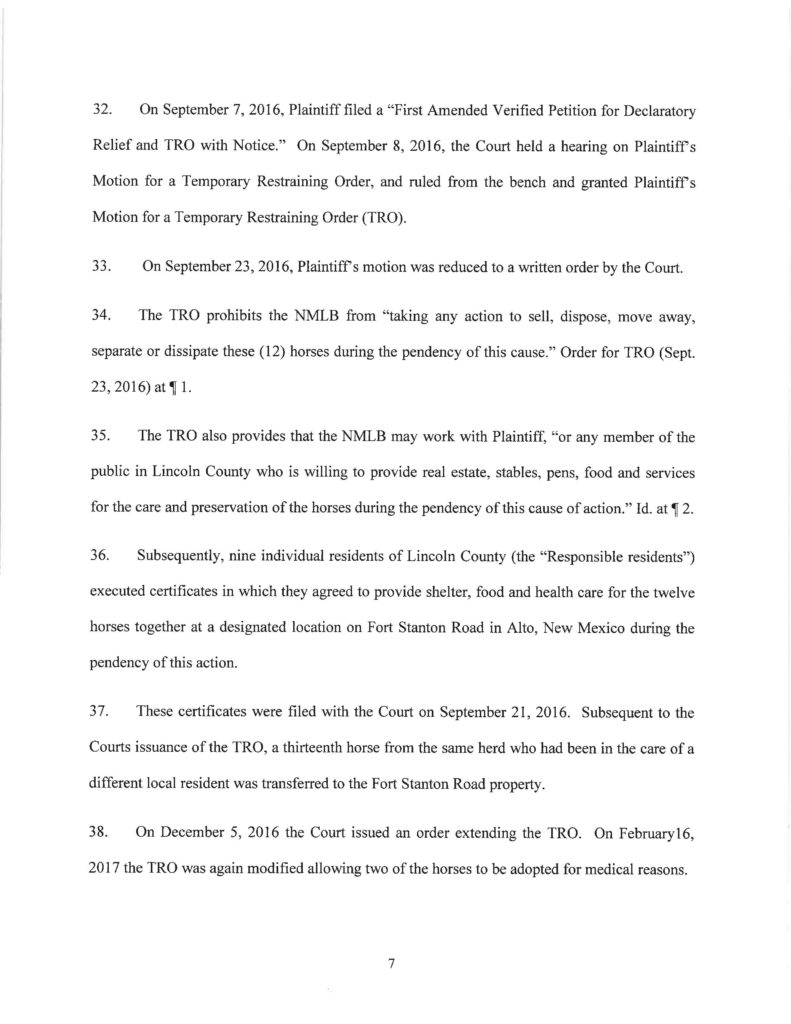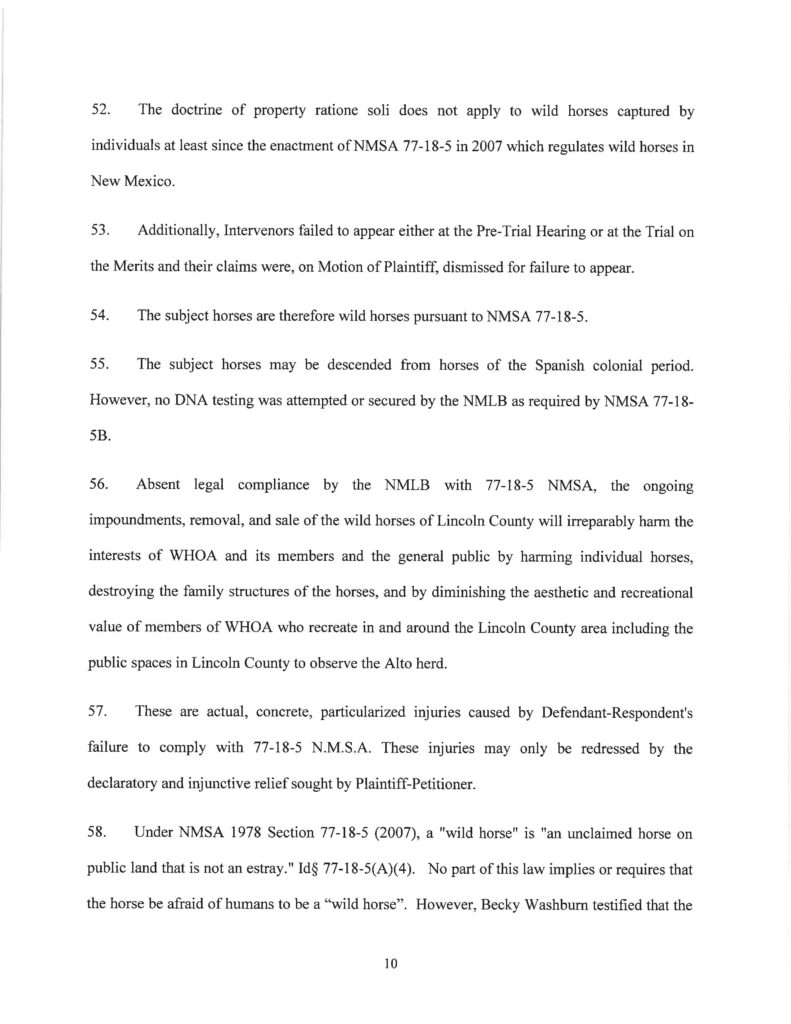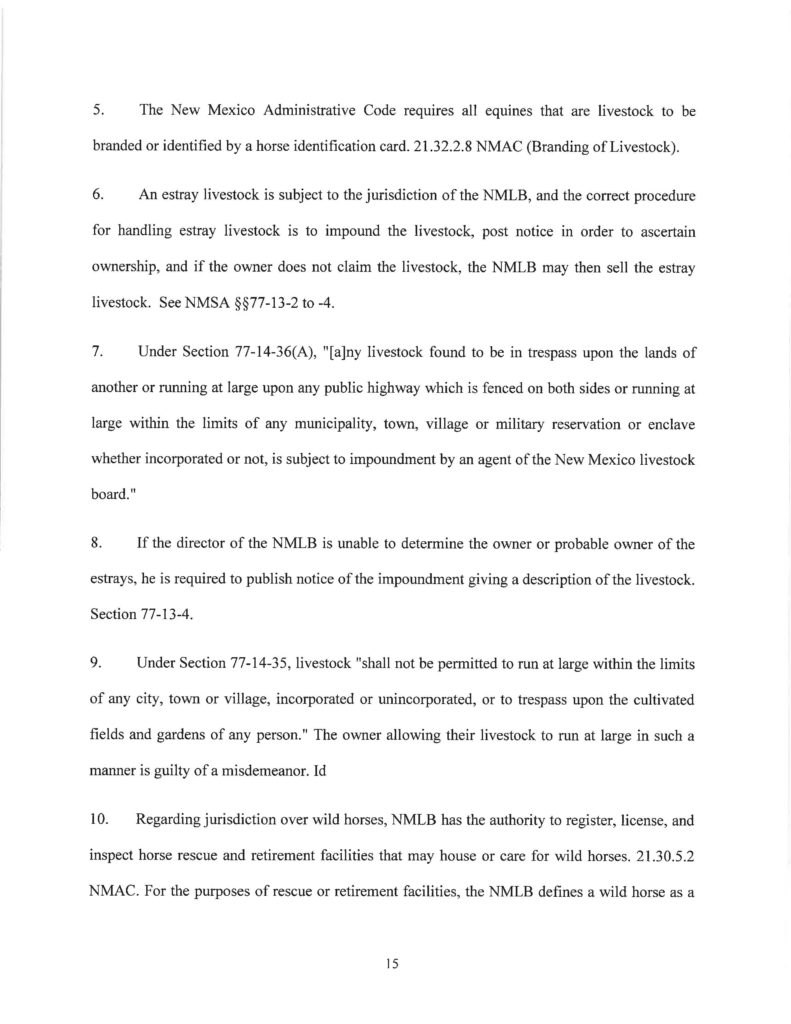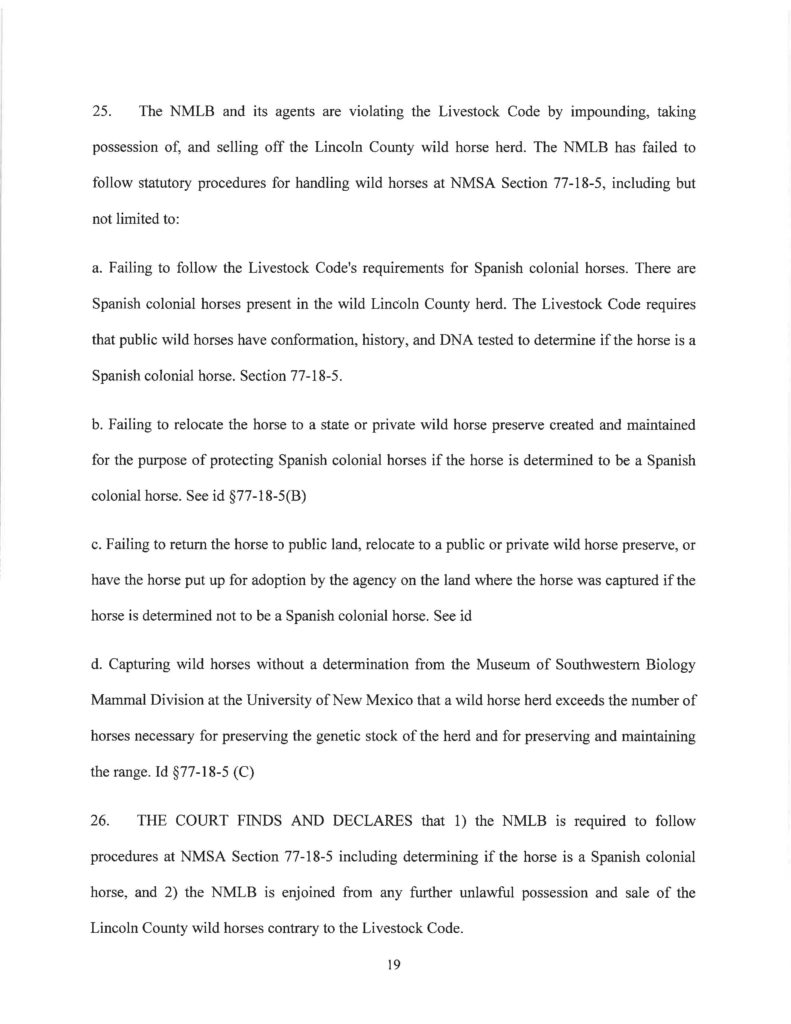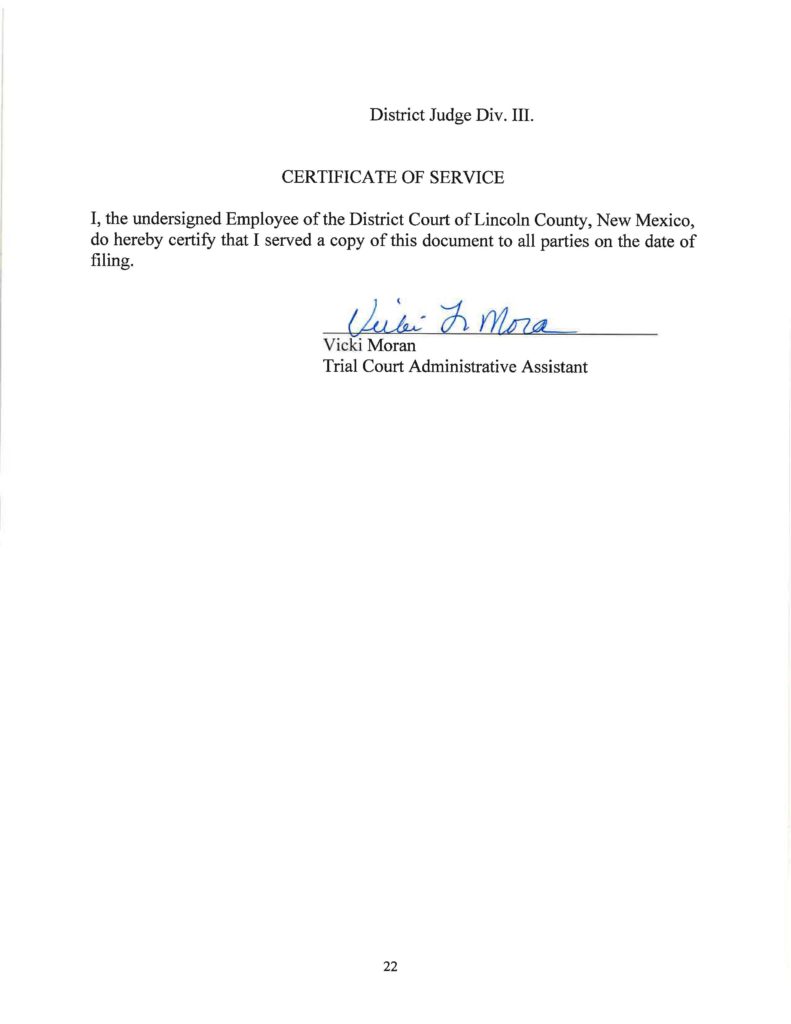Thanks to those in power who manipulate the American people on both sides of the aisle, to fight eachother, while gaining power and kickbacks from the bi-partisan $85.6 billion/yr {FACTORY} Farm Bill
All the FARM BILL give aways for school lunches and free “food” programs to create a government market for their grizzly, infeasible, unhealthy products which wipe out our wildlife and fresh water, in pretty packages.
At the same time, amassing horse slaughter $$ from the NM border and others, as well as slimy political kudos (for co-signing but never acting on anti-horse salughter bills) from those they decieve, divide, and attempt to conquer, all while happily and illegally harming both sentient homo sapien and sentient equine.
LIES ARE PROTECTED AS FREE SPEECH – SENTIENT BEINGS ARE NOT
Meet Tom Udall a typical US politician the main PUSHER of the big round up plan called the “PathForward” who set up an Indigenous person Deb Haaland not an elected politician, to be the face of it (can you say Indigenous Scape Goat?)
However WILLING she clearly is, she is silently taking the fall for the mass roundup and slaughter of our necessary and native Mega Fauna of over 55 million years, the horse. We must have our native non-ruminant ungulates especially those that clear the firesheds without harming the riparian areas and without adding to the Green House Gasses, or killing native seeds, etc.
Remember folks, the lie is protected in CONGRESS, in Congressional Committees, in all our corrupt and backwards State Legislatures especially New Mexico’s whose SAFE ACT Co-signing Governor Michelle Lujan Grizzly refuses to close her own border to horse slaughter while she fights WHOA’s massive legislative wins and court wins for New Mexico’s state wild horses in the Appellate Court, right now.
Udall’s legacy of gaslighting the electorate as an “outdoors guy”, to wipe out our native wildlife from White Sands in the 1990’s, ending with his work throughout the western states og passing this massive round-up and slaughter plan of our native wild horse and burro, will be told herein, at least in part.
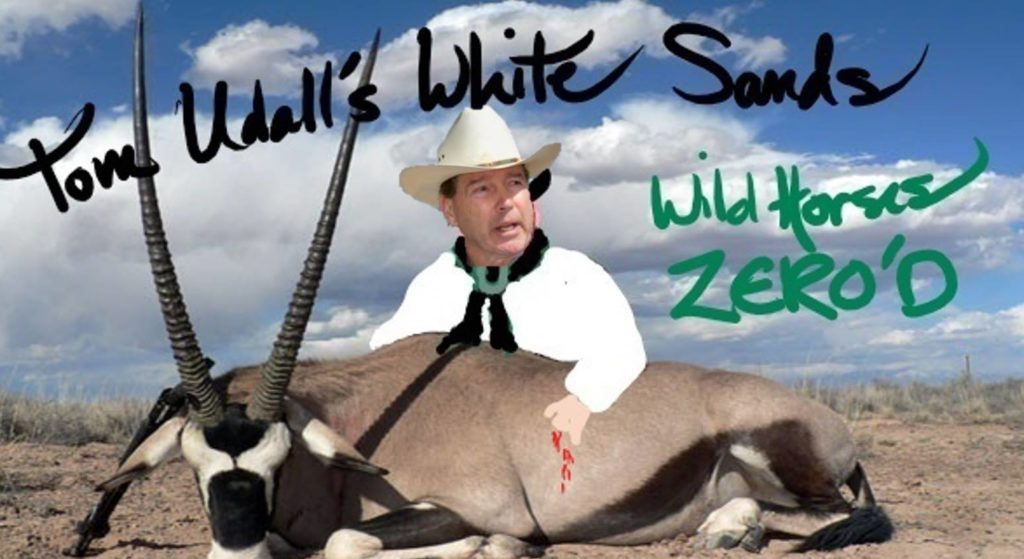
Step 1: Create a hormonal sterilant (Gona-CON) that effectively sterilizes both Stallions and Mares. (Stallions in one shot loses harem stallion role in 6 mos.)
“Six months post-vaccination, serum testosterone concentrations had decreased and the treated stallion had lost his harem stallion role.” https://www.frontiersin.org/articles/10.3389/fvets.2020.569185/full?&utm_source=Email_to_authors_&utm_medium=Email&utm_content=T1_11.5e1_author&utm_campaign=Email_publication&field=&journalName=Frontiers_in_Veterinary_Science&id=569185
“There is a chance some vaccinated females will become permanently
sterile. Accidental injection of males will result in infertility.” “Accidental injection may cause infertility in
women.” https://www3.epa.gov/pesticides/chem_search/ppls/086833-00001-20170706.pdf
Step 2: Ensure the USDA will allow Gona-CON’s use in food animals or meat market.
The liquid carrier for a vaccine which boosts immune response by making the body think there is an issue using dead parts of a bacterium etc., but is non-disease causing, is called an adjuvant. The government, which has developed Gona-CON has worked to ensure that the adjuvant for Gona-CON is accepted for use in food animals. See page 2 of this link which states
“NWRC has modified and tested a USDA-approved Johne’s vaccine called Mycopar™ as a replacement for
Freund’s adjuvant. Mycopar™ has already been approved for use in food animals by APHIS.” (See Green Sidebar on page 2) http://mtlebanon.org/DocumentCenter/View/9629/gonacon1rev_Updated-2008?bidId=
The tricky EPA label states “Do not apply this product to food or feed.” meaning not to put Gona-CON “on” food (see last link in Step 1), to imply it is not made for use in food animals, however, it is. https://www3.epa.gov/pesticides/chem_search/ppls/056228-00041-20151119.pdf Also, see first page, the USDA-APHIS is the owner of this patent.
Step 3: Create a Remote Control Darting Machine (developed with the government at NMSU).
This machine can dart three horses at once in the chest (FRONT) while eating side by side at feeding stations. This machine also inserts a chip to track who is already sterilized. Remote/machine darting is important because this hormonal sterilant GonaCON, is not safe for humans/women to handle.
Reportedly, the cost is $100,000 per machine. Hence, the $11 billion for “contraception” which was recently approved by Congress and was advertised (by those who drink the Kool Aid, or have a conflict of interest), as a WIN for wild horses. This will buy about 50 to 100 of these machines.
Step 4: BLOCK the use of non-hormonal and non-sterilant contraception PZP(1) in this Darting Machine.
Porcine Zona Pelucida called PZP (1) was developed by a non-governmental organization (NGO) (2) (3). HSUS owns the PZP patent though HSUS did not develop it and does not manufacture it. However, HSUS has reportedly disallowed PZP to be darted from the chest (front) thereby tacitly allowing ONLY the government’s sterilant, Gona-CON, to be used in government’s Remote Control Darting machine.
Our native horses and burros are almost gone, despite mainsteam media misinformation which also virtually never mentions the 93 million non-native cattle (which outweigh us and out eat us in this nation) vs approximately 0.05 million wild horses in the US . Cattle are also about 1/3 larger than they were 50 yrs ago due to genetic manipulation and 70% of crops we grow, which uses up most of our fresh water, is fed to livestock and both are sent overseas for $$! We don’t even have 1/10th of a million horses in the entire US, even when including owned horses!
Citizens Against Equine Slaughter (CAES) in Oregon has caught the BLM attempting to utilize GonaCON on our native wild horses without the required environmental (NEPA) review and notification of interested parties, as part of their 10-year plan, “The Path Forward” (see Step 5, below).
(1) PZP is disallowed for use in food animals per it’s EPA label http://(3) PZP is disallowed for use in food animals per it’s EPA label https://www3.epa.gov/pesticides/chem_search/ppls/086833-00001-20170706.pdf because it’s aduvant though not disease causing can give false positives for TB due to it’s ability to also protect an animal from being infected with TB. https://www.jstor.org/stable/20096515. This is because an aduvant called Fruend’s Adjuvant though not disease causing can give false positives for TB due to it’s ability to also protect an animal from being infected with TB. https://www.jstor.org/stable/20096515 However, PZP uses only modified Fruends adjuvant and Fruends incomplete adjuvant which do not give false positive results for TB. https://www.sccpzp.org/pzp/faq/
(2) Science and Conservation Center, Billings Montana, which sells this contraceptive at a loss for a very low price about $25/ vaccination. https://www.sccpzp.org/pzp/faq/ No one is gettin rich here.
(3) PZP: Porcine Zona Pellicida contraceptive has been used sucessfully without the need for one round up, or one adoption, for over 30 years at Assateague National Park (over 45,000 acres most of them very remote as verified on google maps!). https://www.nps.gov/asis/learn/nature/resource-brief-horses.htm
Step 5: Congress Passed the “Path Forward”, a 10-year illegal, disgraceful helicopter roundup and sterilization plan in just ONE congressional session.
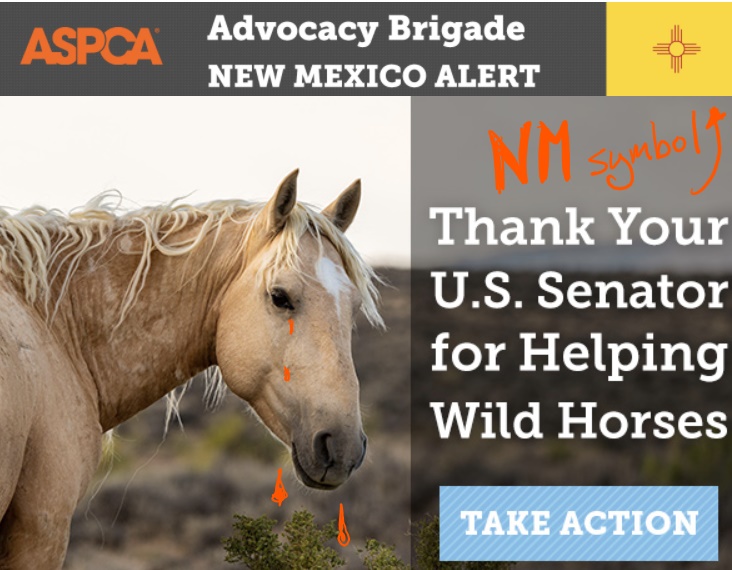
“PATH FORWARD”: US Senator Tom Udall planned and announced his retirement on March 25th 2019. Six months later on October 2 2019, the PATH FORWARD was passed and ASPCA gave Tom Udall ALL the credit via email announcement (see picture above, with emphasis added) for PUSHING and successfully passing this disgraceful path to extinction in ONE Congressional session. Tom Udall thereby set up an Indigenous Secretary of the Interior, while he himself, stepped aside.
Cruelly, Tom Udall had neither the Canadian border nor his own NM border closed to horse slaughter transport before passing this huge round up and sterilization plan, cynically called the Path Forward. As a multi-year sponsor of the SAFE ACT (1), which would close the borders to horse slaughter, he well knew the consequences of this plan and of the slaughter it would cause.
Cruelly Again, Tom Udall did not end the inhumane and therefore illegal federal helicopter round ups before passing the Path Forward. (2).
(1) SAFE ACT: This Congressional bill would end American Horse slaughter by disallowing horses to be sent over our borders to be slaughtered in other countries. It has been introduced in various forms since 2015 and it generally has approximately 200 plus co-signers, yet never moves significantly. What do we see, empathy or excuses? This lets us know who is in office. https://www.congress.gov/bill/117th-congress/house-bill/3355/all-info
(2) Likewise, after many years of sponsoring the SAFE ACT as a NM Congress person, Michelle Lujan Grisham (Democrat) became a NM Governor but has not closed the NM border to horse slaughter, as neither did stated anti-slaughter Governor Martinez (Republican). This alone limit their access to the presidency but makes it clear who is running the government, and it’s neither party.
Step 6: American politicians without decency of any kind know that they cannot openly support horse slaughter in the US. Their Answer? Scapegoat the Indigenous!
Politicians have been disgustingly working to scapegoat the Indigenous for horse slaughter in NM since as early as 2007 and after, even dumping horses on tribal lands to try and push them towards slaughter and working towards a horse composting center for federally wild horses in holding pens, calling it “triage” (much info. available upon request). Utah has also been caught up in this effort to PASS the HAT of slaughter off on the Indigenous. (See pics below from the governmentally attended Salt Lake City, Utah Slaughter Seminar Agenda in 2017. Courtesy CAES inspection of public records request (IPRA) to Governor Gary Herbert’s office.)
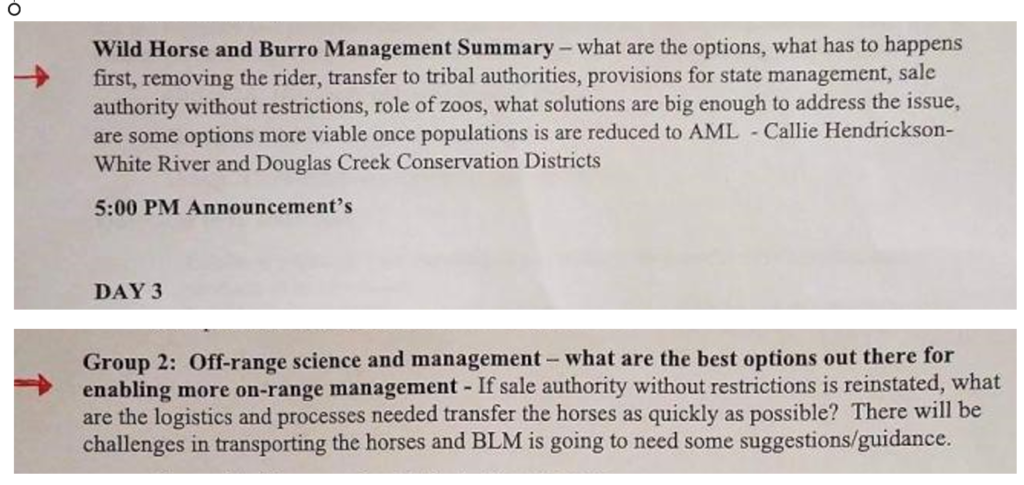
Deb Haaland, Secretary of the Interior. At Deb Haaland’s pueblo, the Laguna Pueblo, there is no definition of a wild horse. All unowned horses are defined as estray livestock. The Laguna Pueblo hired the previous executive director of the New Mexico Livestock Board (NMLB) Robert Alexander as their Range Management Specialist and he has testified for the NMLB in court against Wild horses and for Senator Pat Woods at the NM legislature, who has brought numerous NM State bills against NM’s legally wild horses (1) in an attempt to eradicate them as estray livestock.
Moreover, Deb Haaland’s Congressional Field Representative and long time associate since at least 2013, Brenda McKenna, now NM Senator McKenna, is also working with Senator Pat Woods and co-sponsoring anti-wild horse bills (SB 385 of 2021) and other bills to wipe out NM’s state wild horse protections, infavor of private property rights (2). Senator McKenna’s signature ploy is much like that of Utah’s Chris Stewart, she trickily feigns safety concerns while doing absolutely nothing for road safety in the Rocky Mountain wild life corridor of the Sandia Moutain. While at the same time, she works to remove protections from round ups in favor of private property rights, though New Mexico is a fence out state for the 1.4 million non-native cattle. It is a fence out state for wild horses also, as WHOA has proven in court. This is what McKenna wants to change, so that property owners can call the NM Livestock Board and round up wild horses, rather than have to put up a fence like they/she would for the cattle. (Will she outlaw the deer also?)
So where does Deb Haaland stand? Who is she really representing? Ask her. She has been loudly silent during these massive and brutal helicopter round ups. Many federally wild horses in Oregon alone have been round up without public notice with all kinds of horrendous injuries for which many have been euthanized.
(1) Ground breaking legislation was passed in NM in 2007 for state’s wild horses won by WHOA and Senator Komadina MD. which WHOA has upheld in court. NMSA 77-18-5. See whoanm.org for 3 court decisions..
(2) There have been 8 bills attempting to undo these protections and one of them in 2021 was even literally against another Pueblo is pro-wild wild horse and the Indian Affairs committee was literally lied to, but Senator McKenna voted for this bill which was killed later. Most of these bills have been by Senator Pats Woods (3) since 2017 after the WHOA court wins, and now Senator Brenda McKenna has joined him in 2021 with Senate Bill 385 (SB385). Here is just one of the duplicitous and misleading to the point of being fraudulent bills: SB126 https://www.youtube.com/watch?v=kg6ata_bvc8
(3) Senator Pat Woods is the recipient well over $1 Million from the infamous kick back source the Farm Bill. He uses his legislative position to steal our natural resources. Shouldn’t he be happy enough with this pocketfull of free $$$. See EWG working group.
Step 7: Allow the illegal Helicopter Round-ups in the Media/News! Of course! So that Americans can be appalled at Helicopters Round ups and instead support their sterilization as “humane”.
Helicopters round ups are now in the news, as they have never been since 2004. WHY? They want people to push for Gona-CON to replace helicopter round ups. The other humane issue, the Elephant in the room is slaughter over the borders, which they sleazily refuse to stop. Their sleazy final solution is Gona-CON, the a sterilant that can be used on “food” animals couched as a “humane” contraceptive, though it will destroy the very family structure that has allowed horses to survive millenia.
Two former “HSUS” staffers were at the front of the “anti-helicopter media”. They were hiding behind two good sounding new name Utah groups. Again, now the use of a sterilant Gona-CON can be advertised as a kindness .
Step 8: End Freeze Brands and instead use chips compatible with the Automatic Darting Machine.
https://nmlegis.gov/handouts/LGC%20072318%20Item%203%20FS_2018%20Congress%20Brief%20NM.pdf
“Regional Office The Regional Office (RO) purchased 1,000 equine microchips (840 ISO standard 134 MHz). These microchips will replace freeze branding and use of the BLM identification system and meet the 9 CFR requirement for individual animal identification from point of origin. Each horse’s microchip is being registered in the National Equine Registry. The RO has developed a solid working relationship with New Mexico State University on wild and feral horse issues in the state, as well as working with the Tribal Nations in the Southwestern Region . . .”
Yes of course, NMSU developed the Gona-CON darter which uses CHIPS!
In Conclusion
This is cruelty and fraudulent. This is the destruction of our Natural Resources and collusion to do so. This is treasonous and all of this is against our American culture. Our government has spent 50 years secretly and fraudulently working to exterminate our wild horses, while pretending they are not native and pretending to care, and much worse. This is clear.
There are a number of excellent on range management alternatives that the American people support. What over 80% of the US does not support is horse slaughter and round ups. The alternatives include a combination of native natural predators, a non-sterilant contraceptive administered by Veterans and and reduction of cattle.
The government has illegally and negligently not included cost analysis in their analysis’ of these horrific and expensive removals and holding pens to slaughter.
We would have included public lands ranchers as part of the management team possibility here, but so far, the federal government refuses to remove the conflict of interest and actually move forward.
This is a jobs opportunity for rural areas, including ranching families, but the government, under tow of the famous Farm BIll kickbacks, is more interested in robots and destruction of resources than it is people and preservation.


